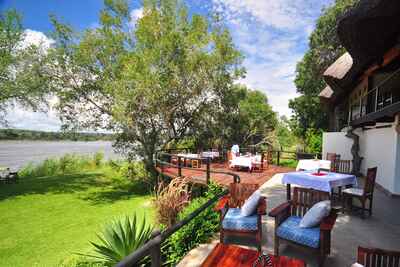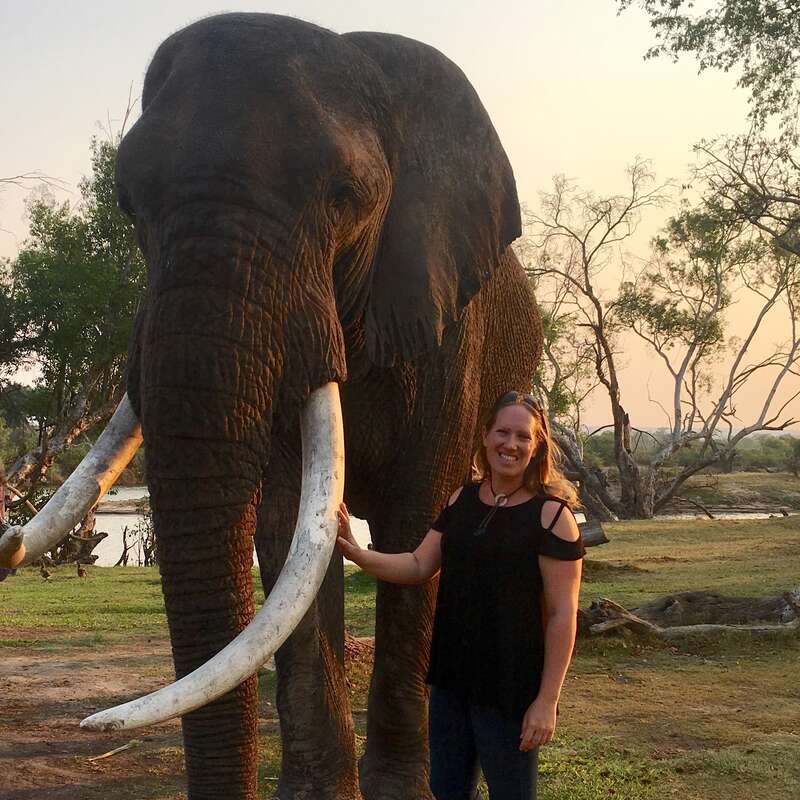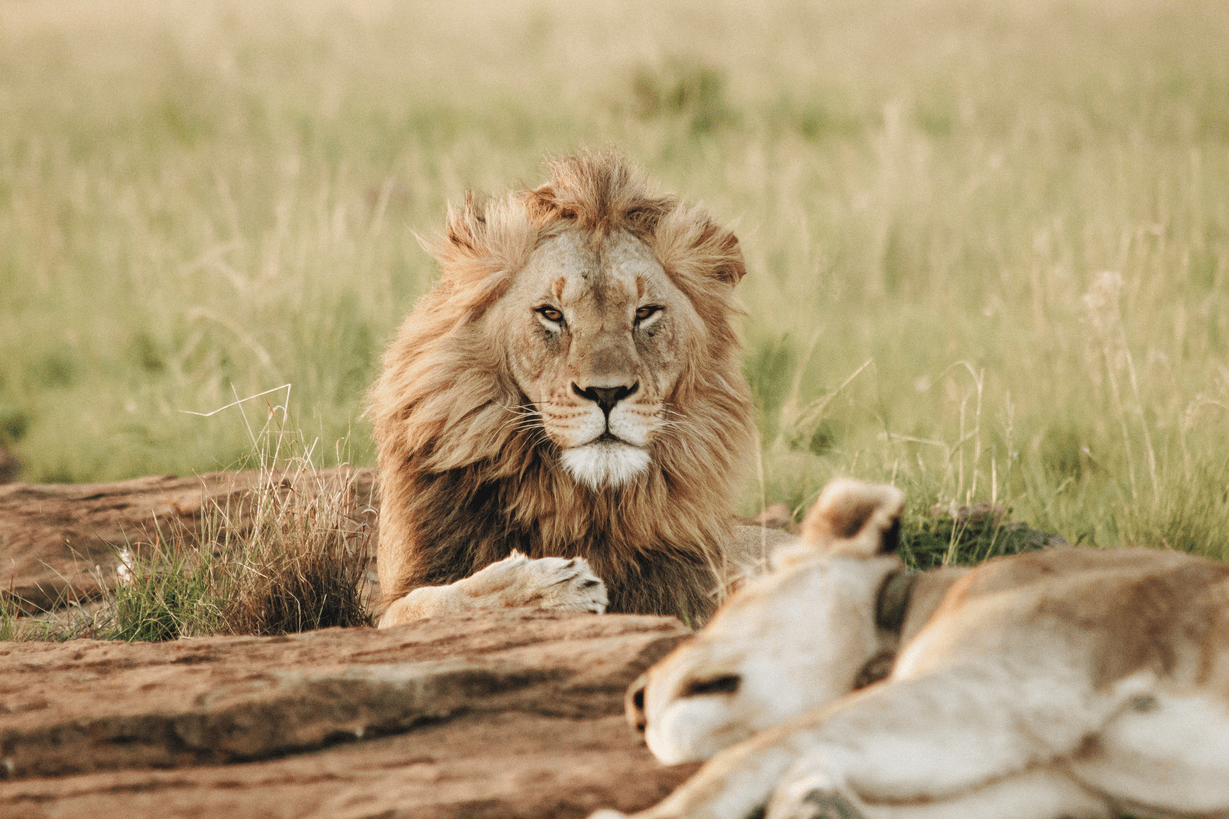About Waterberry Zambezi Lodge
With lush gardens, vibrant flowers and the sounds of the river rushing past, there’s a tropical feel about Waterberry.
Yet that river is the Zambezi, flowing downstream towards the majestic Victoria Falls, with cool evenings and plenty of tree-shaded corners to offset the heat of the midday sun.
Among the trees, individual chalets with thatched roofs blend into the setting, some overlooking the river, others a small lake. Each is named after one of the birds that may be spotted on the property, from sunbirds to jacanas.
More hedonistically, you’ll find bathrobes and fluffy bath sheets, superking or twin beds draped with mosquito netting, and sunloungers on your private terrace – where dinner can be served on request. A fan covers the hotter months; electric blankets are on hand should temperatures drop.
Should a tent appeal, head to The Woodland, in its own small enclave at the back of the property, while for families, the privacy of the five-bedroom Riverside Farmhouse, complete with a pool, comes into its own.
There’s a pool for other guests, too, alongside a split-level hub whose dining tables spill out into the gardens and onto a riverside terrace.
The service is hospitable, and the activities around the Victoria Falls are a short distance away: Waterberry makes an attractive option for a few days in the vicinity of the Falls.
Our view
Waterberry isn't a five-star lodge, but then they don't aim to be. However, their friendly team does deliver on service – with some of the best information on the area and the activities that we've come across – and they provide a comfortable, very attractive setting from which to visit the Victoria Falls and explore the Zambezi River.
Accommodation
7 chalets, 3 tents, 1 house
Children
Best for 6+
Open
All year
Activities

Birdwatching

Boat trip

Canoeing

Cultural excursion

Elephant encounter

Fishing

Helicopter

Kayaking

Microlight

White-water rafting
Traveller reviews of Waterberry Zambezi Lodge
63 real, un-edited reviews from Expert Africa's travellers.
Arrived 4 May 2025, 2 nights
"Waterberry Zambezi Lodge review"
Overall rating: Excellent
Arrived 13 Mar 2025, 3 nights
"Waterberry Zambezi Lodge review"
Overall rating: Excellent
Arrived 3 Mar 2025, 3 nights
"Waterberry Zambezi Lodge review"
Overall rating: Good
Arrived 27 Aug 2024, 3 nights
"Waterberry Zambezi Lodge review"
Overall rating: Excellent
Arrived 19 Aug 2024, 1 nights
"Waterberry Zambezi Lodge review"
Overall rating: Excellent
Arrived 6 Aug 2024, 3 nights
"Waterberry Zambezi Lodge review"
Overall rating: Excellent
Arrived 2 Jul 2024, 2 nights
"Waterberry Zambezi Lodge review"
Overall rating: Excellent
Arrived 13 May 2024, 2 nights
"Waterberry Zambezi Lodge review"
Overall rating: Excellent
Arrived 24 Feb 2024, 3 nights
"Waterberry Zambezi Lodge review"
Overall rating: Excellent
Arrived 11 Jan 2024, 2 nights
"Waterberry Zambezi Lodge review"
Overall rating: Excellent
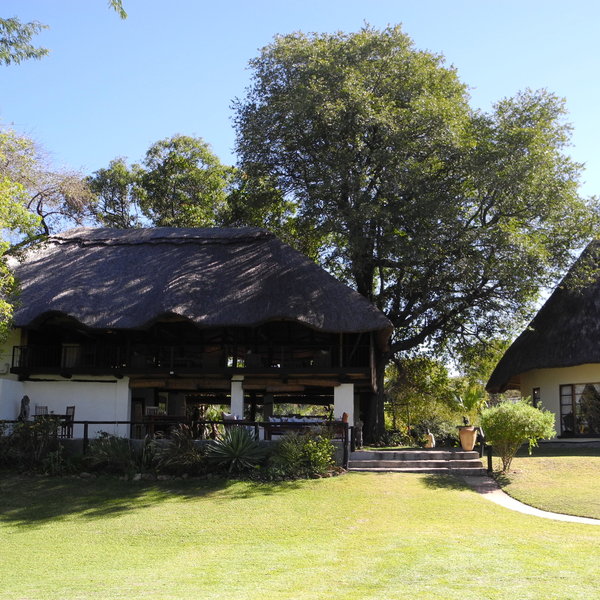
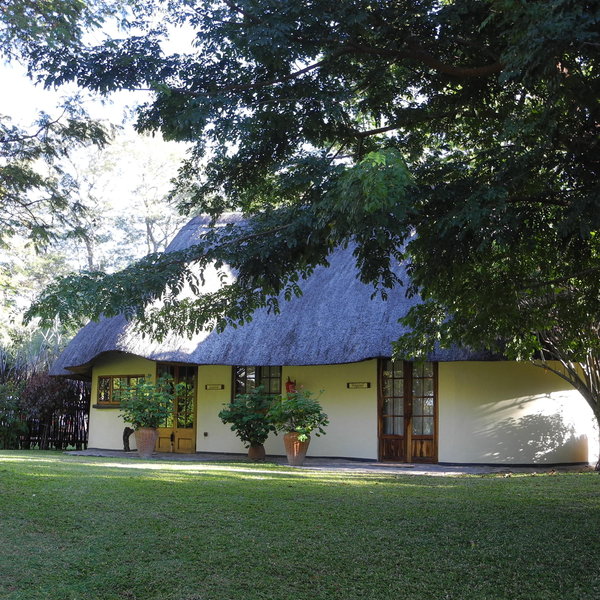
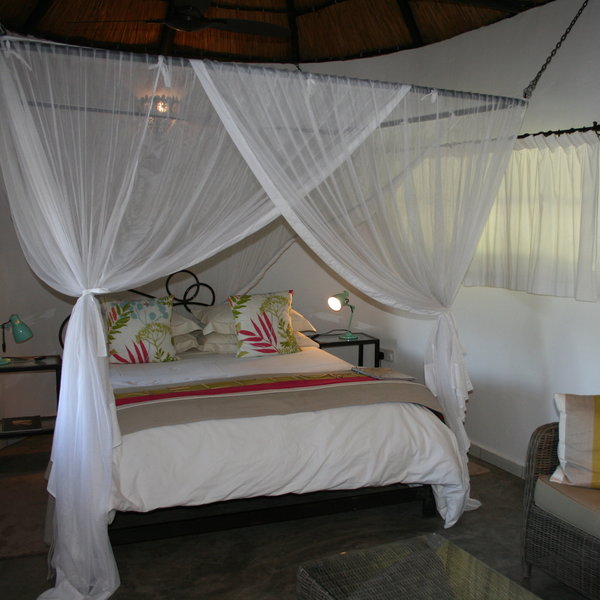
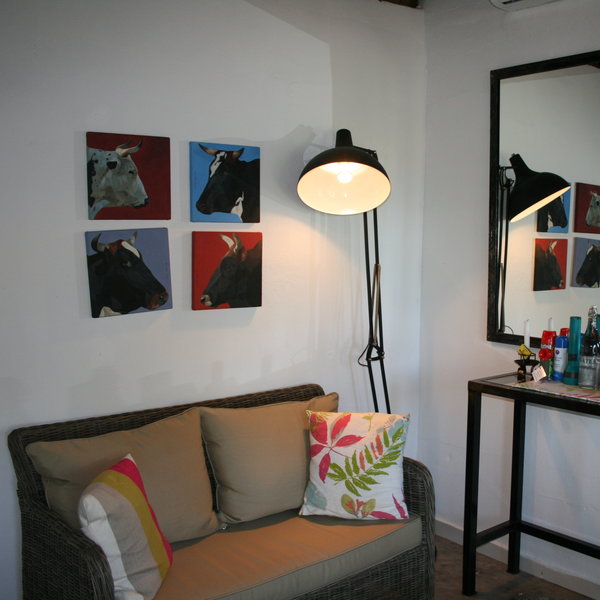
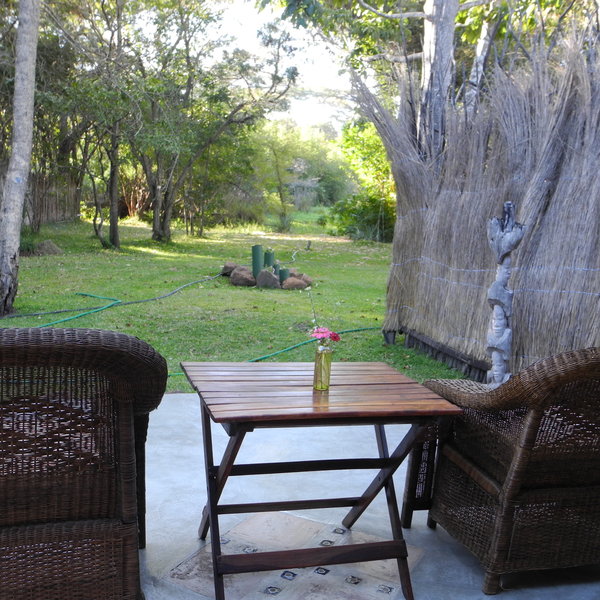
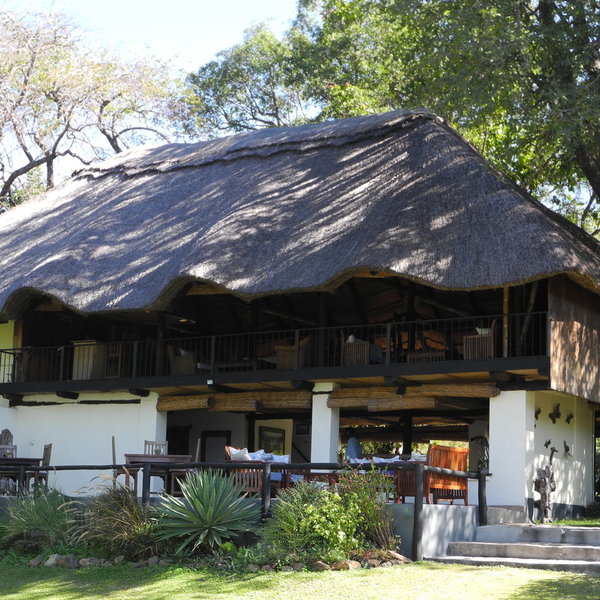
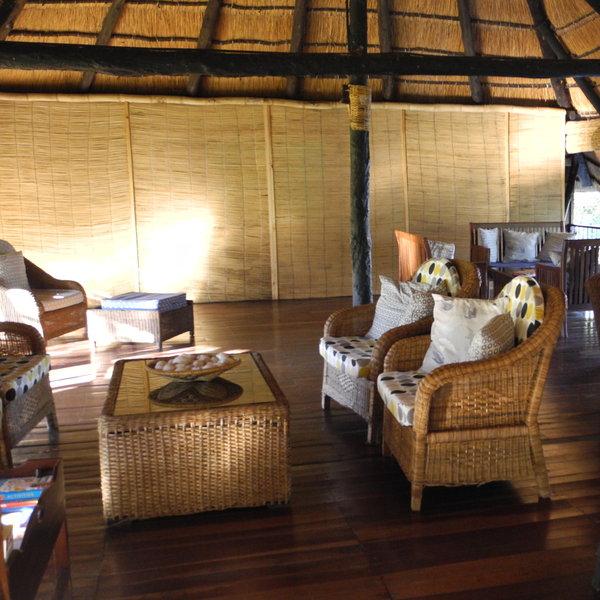
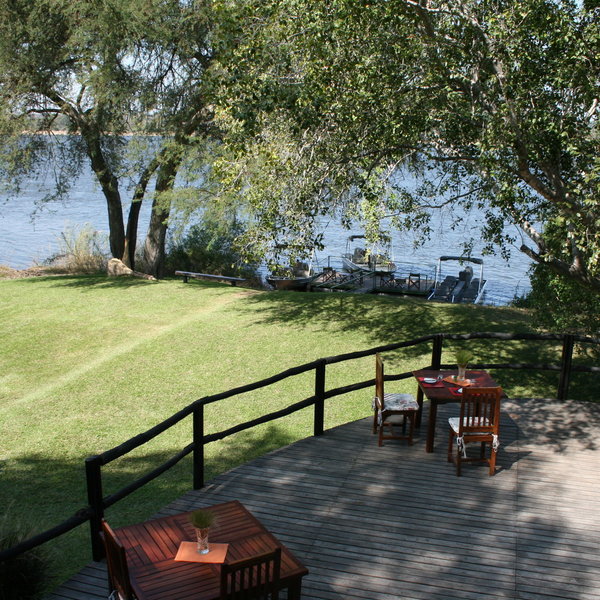
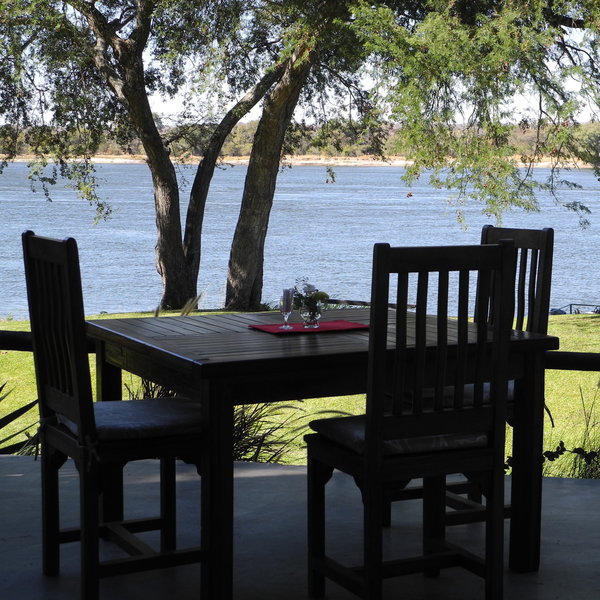
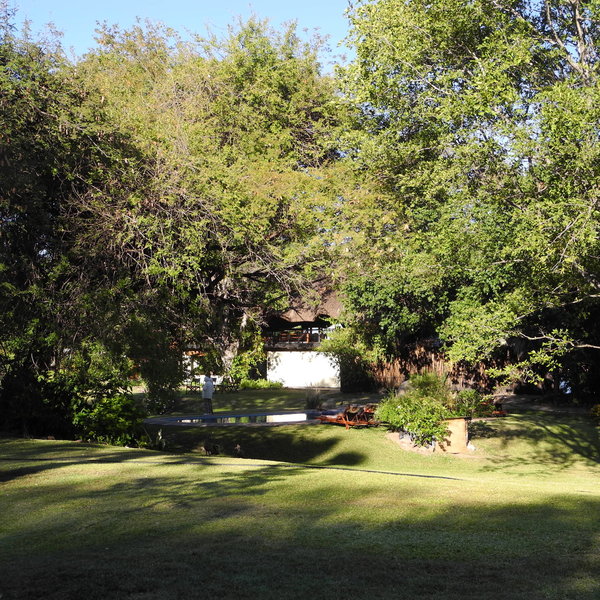
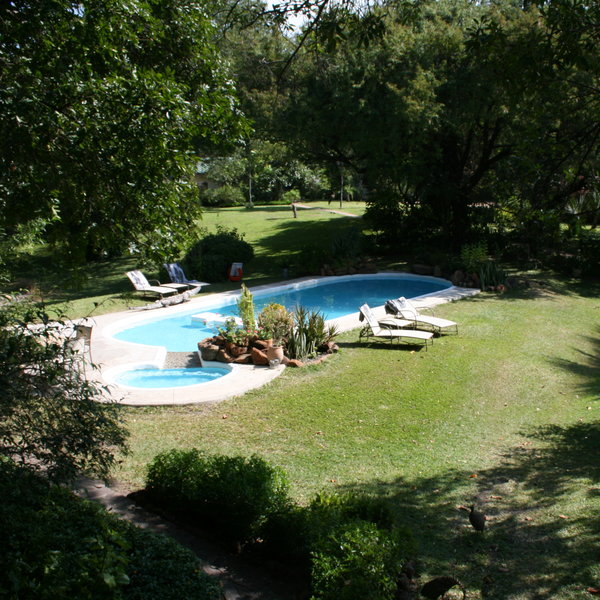
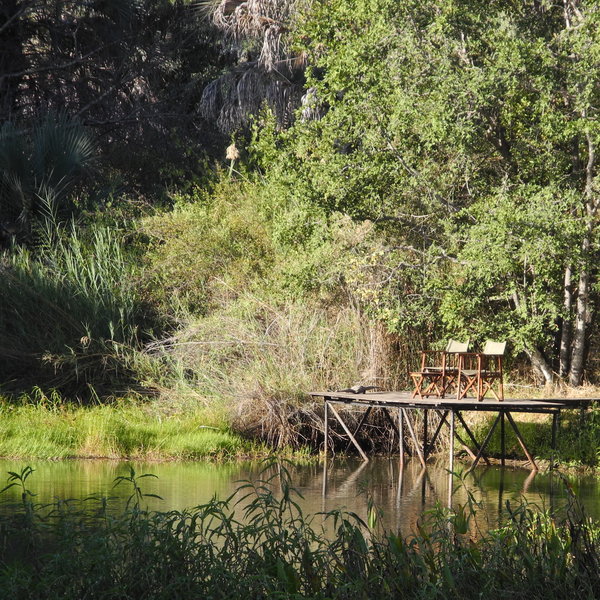
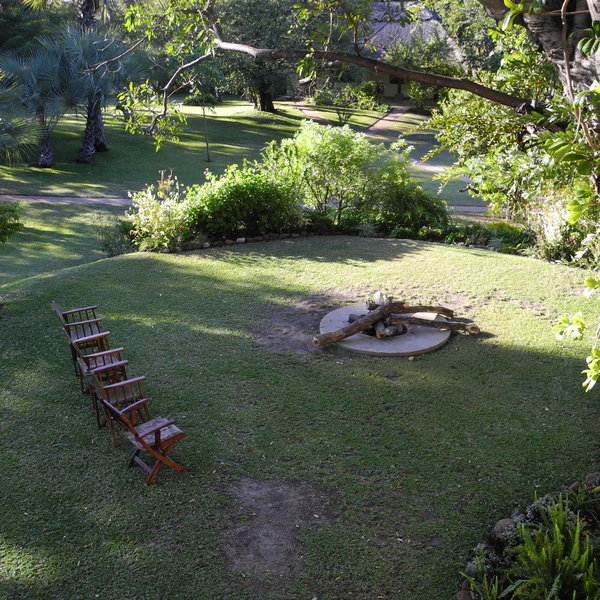
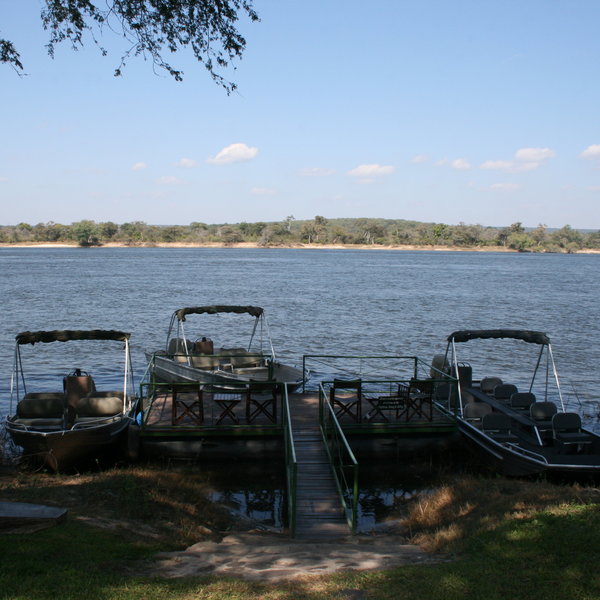
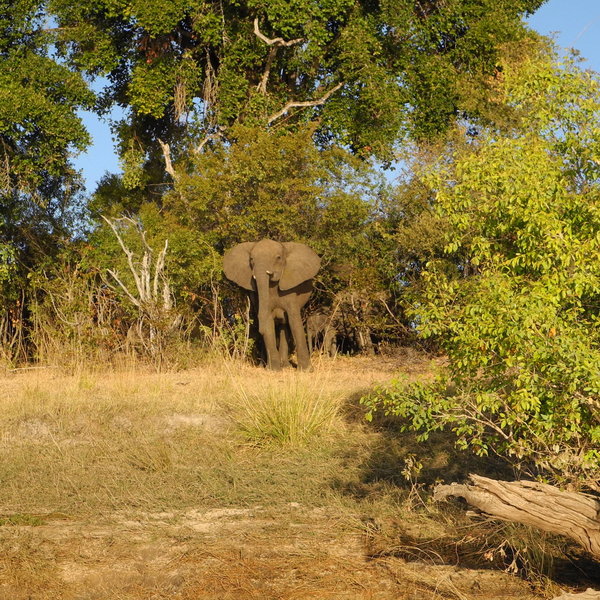
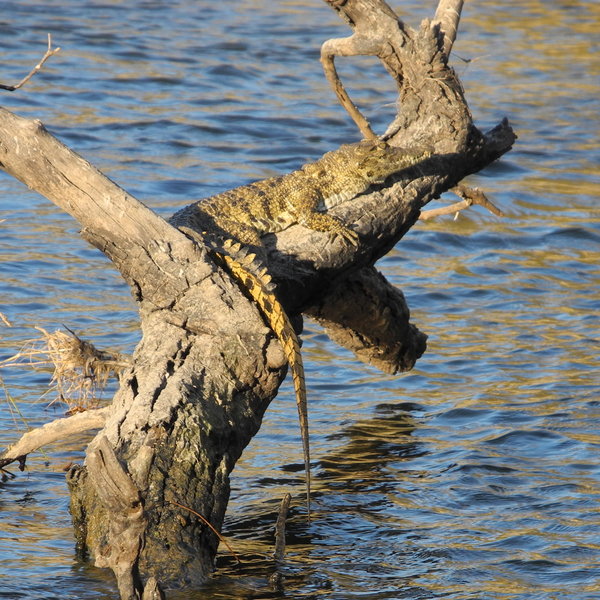
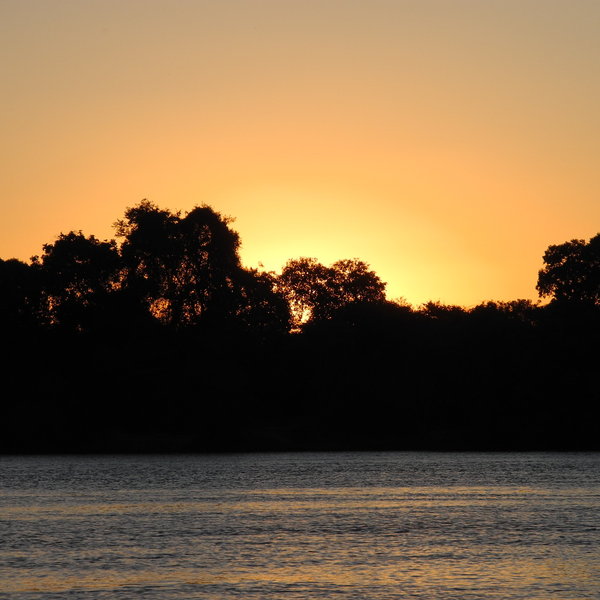
Expert Africa's gallery
When we travel we take lots of photos ourselves to give you a real and un-edited view of the trips. See our 28 pictures of Waterberry Lodge to get the candid view.
View galleryTrips visiting Waterberry Lodge
Just ideas, we'll always tailor-make a trip for you
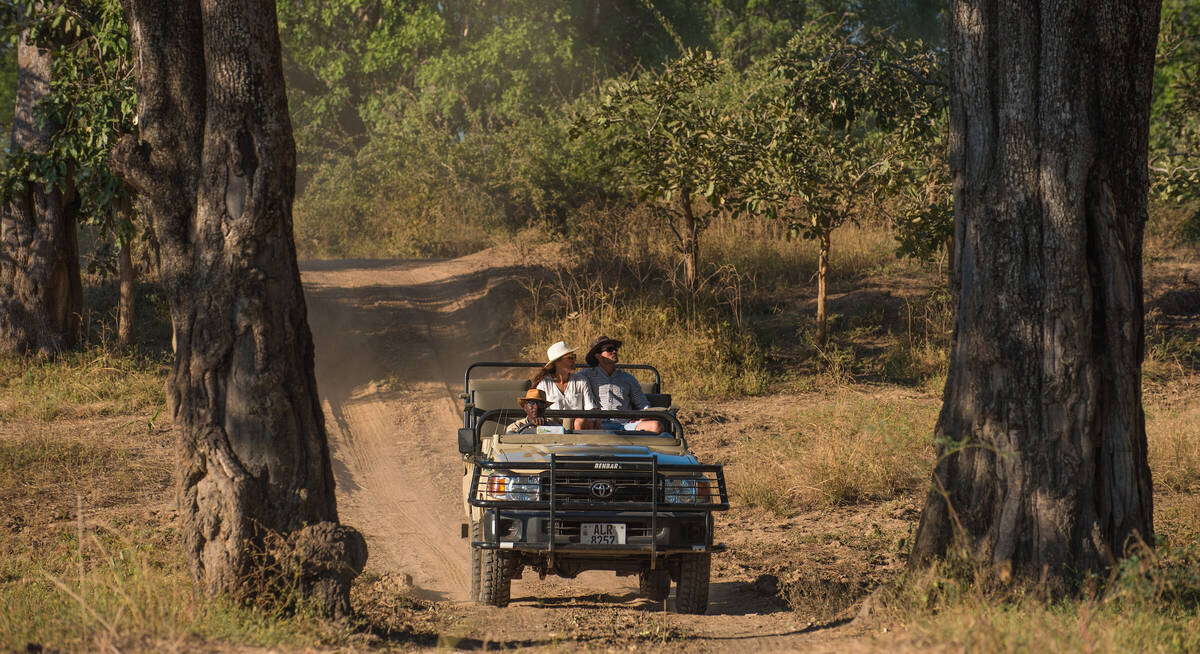
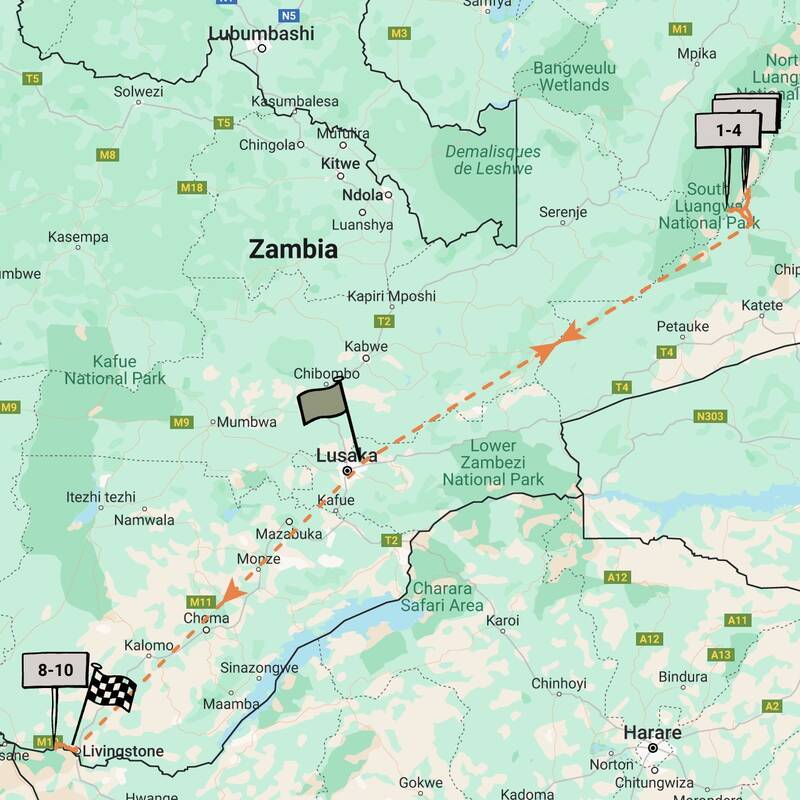
Hippo Safari
10 days • 4 locations • 1 country
LUSAKA AIRPORT TO LIVINGSTONE AIRPORT
Combining excellent game with aspects of remoter safari in South Luangwa, as well as the cultural delights of Livingstone, this trip also makes use of long-stay discounts, making it an excellent-value and well-rounded adventure.
Visiting South Luangwa, Livingstone
US$7,360 - US$8,780 per person
Waterberry Zambezi Lodge: Our full report
Small, congenial and family-friendly, Waterberry Zambezi Lodge (or simply Waterberry Lodge) is set on 750m ...
... of Zambezi riverfront. It’s just a 45-minute drive upstream from the Victoria Falls: close enough to visit the Falls easily, but far enough away that its tranquillity isn't disturbed by the noise of the helicopters or microlight flights that operate there during the day.
The lodge itself is named for the waterberry tree (Syzygium cordatum) that occurs in prolific numbers along the banks of the river.
The range of accommodation here presents plenty of choice for guests. Dotted around pretty, beautifully landscaped gardens are seven individual chalets, or “cottages”, each named after different birds. Attractively constructed of painted brick under thatch, their rooms are not big, but they are comfortable. All have a mosquito net suspended above the beds, and an en-suite bathroom with fluffy bath sheets, shower, handbasin and flushing toilet. The lodge also provides bathrobes, shampoo, soap, bug spray, mosquito repellent and hand sanitiser.
Overlooking the river's edge are two of the chalets, Weaver and Swallow, each with a double bed and a private veranda. Then immediately adjacent to the main area is the family chalet, Owl, sleeping up to five over two levels.
Set back from the river, with a view of a small lake, are two more chalets, each with two separate rooms. Of these, the twin-bedded Sunbird can interlink with the adjacent double, Wagtail, while Heron and Jacana each have both a double and a single bed. Unfortunately it's not possible to guarantee a specific room when booking, although the team do their best to accommodate any requests.
In addition to Waterberry's chalet accommodation is the River Farmhouse. About a five-minute walk from the main lodge, the Farmhouse is perfect for families or groups of between four and ten people travelling together. With three en-suite rooms, and a further two rooms with a shared bathroom in between, guests at the Farmhouse also have the services of a private chef as well as a separate team of staff, and a private boat and vehicles for their activities. Surrounded by beautifully manicured gardens and with a large swimming pool, it’s a great spot for a family safari.
The newest section of the lodge is The Woodlands, where three tents are nestled in the woodland towards the back of the grounds. Initially created for birders as a spot to sit in peace and quiet amongst the trees, the tents are a popular lower-cost accommodation option. Each tent has either two single beds or a king-size bed under a mosquito net, an en-suite bathroom, a small dressing area with shelves and storage space for luggage, and two small seating areas, one inside and one outside in front of the tent. Breakfasts are served on The Woodlands’ private terrace, and other meals can be taken in the main Farmhouse restaurant (a 200m walk down neat pathways) or served privately at the Woodlands, on request.
The main area at Waterberry Lodge is built over two levels. Upstairs are a big lounge and bar, although we found these were largely unused during our stay in September 2017. If the bar is closed, there is almost always someone around who can help to get you a drink. Downstairs is the dining area, which opens out on to the gardens at the back and to a terrace overlooking the river. We particularly enjoyed eating our breakfast at a table set up in the lovely garden.
As well as a good-sized pool with sunloungers, the deck overlooking the small lake is a particularly peaceful spot to soak up some sun, or simply relax and catch up on your reading on the nearby tree platform. For the more energetic there is also a short, well-signposted nature trail.
On arrival at Waterberry Lodge, we were made to feel right at home and were given a full orientation of the Falls, the area and the activities. The information provided by the team and in the folders in the rooms is detailed and very helpful in helping you to make the most of your stay; it even includes an idea of how long to allow for each activity, what clothes to wear and what to take.
“In-house” activities offered at Waterberry include a visit to the Victoria Falls, sunset cruise, daytime cruise, fishing, island picnics, guided birding, guided village walk, and a guided tour of the town and local markets. It's worth noting that, unlike trips from some of the smarter (and more costly) neighbouring lodges, the visit to Victoria Falls is not guided.
Waterberry Zambezi Lodge is usually booked on a fully inclusive basis, which means that in addition to meals and most drinks, two of the lodge's in-house activities are included per day. Alternatively, it's possible to book with either one or no in-house activities included: a better option for visitors who plan any of the other activities available in the Victoria Falls area – and which the team at Waterberry is very happy to help organise.
Activities
Birdwatching
Boat trip
Canoeing
Cultural excursion
Elephant encounter
Fishing
Helicopter
Kayaking
Microlight
White-water rafting
Families & children
- Attitude towards children
- Waterberry actively welcomes children of all ages. In fact, they tell us they really enjoy having children at the lodge.
- Property’s age restrictions
- None
- Equipment
- Cots can be provided, but no highchairs. There are board games, colouring books and crayons available, and also a swing. The lodge has several chalets suitable for smaller families of three or four, and one sleeping up to six. There is also the River Farmhouse, which can be booked exclusively for a family of up to eight.
- Generally recommended for children
- We think Waterberry is a great option for families with children, who would be made to feel very welcome. But because of the unfenced access to the Zambezi River and the lake on the property, we think it's better for slightly older children.
- Notes
- The pool and the river in front of the lodge are unfenced, and hippos do graze on the lodge grounds at night. There is also a small, unfenced lake on the grounds, often home to hippos and crocodiles. Parents and guardians must supervise their children at all times.
Food & drink
- Usual board basis
- Full Board & Activities
- Food quality
- In keeping with the style of this informal lodge, the food at Waterberry is not fancy, but on our most recent visit it was very good.
Breakfast is usually served between 7.00 and 9.00am, although if you are heading out earlier for your activities they can usually make a special arrangement. There is a continental buffet of cereal, fruit and yoghurt, while on the menu – and prepared to order – are porridge, omelettes, a full English, French toast or American-style pancakes. We opted for the French toast with bacon: simply presented but delicious!
For those out on activities, the lodge can arrange a simple packed lunch, usually with the ingredients to assemble a sandwich, some fruit and a drink. At the lodge itself, between around midday and 2.00pm, lunch is typically a fresh salad accompanied by something like homemade pizza or lasagne.
A three-course set dinner is available between 7.00 and 9.00pm. We had carrot soup and freshly baked bread rolls, followed by a plated dish of roast chicken, potatoes and seasonal vegetables. The tart, baked lemon pudding was particularly delicious.
If you're feeling a little peckish between mealtimes, the tea- and coffee-making station in the main building is usually stocked with what they described as a “bottomless jar” of homemade biscuits. (We were tempted, but thought better of testing this claim!)
Lunch and dinner are set menus, so if you have any dietary requirements or particular likes/dislikes, then please let us know when booking and we can advise the lodge. - Dining style
- Individual Tables
- Dining locations
- Indoor and Outdoor Dining
- Further dining info, including room service
- None, but they do bring tea or coffee with your wake-up call.
- Drinks included
- For guests staying on the fully inclusive option, local drinks and house wines are included. Premium brands will cost extra.
Our travellers’ wildlife sightings from Waterberry Lodge
Since mid-2018, many of our travellers who stayed at Waterberry Zambezi Lodge have kindly recorded their wildlife sightings and shared them with us. The results are below. Click an animal to see more, and here to see more on our methodology.

97% success

71% success

63% success

54% success

44% success

24% success
Getting there
- Location
- Livingstone & Victoria Falls, Zambia
- Ideal length of stay
- Two or three nights, although three nights is definitely better if you'd like time to relax and take in some of the activities on offer at the lodge and around the Victoria Falls.
- Directions
- The lodge is around a 30-minute drive from Livingstone Airport, or 45 minutes from the Kazungula border post. This is mostly along a tar road, although the last 5km from the main road to the lodge is a dirt track.
- Accessible by
- Self-drive or Fly-and-Transfer
Special interests
- Family safaris
- With family rooms, a swing, a pool, board games, pretty gardens and the option of a private villa, Waterberry Lodge is great for family safari holidays in Zambia. Go walking on the adjacent nature trail or enjoy a variety of activities nearby! We recommend it for children 6+.
- See ideas for Family safaris in Zambia
Sustainability
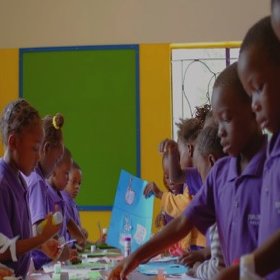
Tukongote Community Projects
Until the turn of the millennium, education was still just a dream for many children in the villages around Waterberry Zambezi Lodge. Then in 2009 Tukongote Community Projects was initiated, with classes for children aged 3–6 years old started in the old mud-and-pole church building, with help from a donation which covered the salary of a pre-school teacher.
Consistent efforts over the years facilitated the construction of four classrooms, which are now part of Tukongote Preschool, frequented daily by 75 pupils. The school officially opened in 2017, with additional classes added each year to build up to full primary-school provision.
The absence of secondary schools nearby means that few families can afford the high costs of accommodation, school fees and uniform or learning materials and school supplies. As a solution, Waterberry – together with their guests – sponsors a number of students to attend boarding school at Kazungula,
To add to the educational facilities, a community study centre was opened in 2018. Consisting of three rooms, the centre benefits from a library supplied with 30,000 books shipped from the UK, a reading club to encourage improvements in literacy, and a multi-purpose classroom which can be used for tuition in many subjects, including maths.
See more great sustainability projects in Zambia
Communications
- Power supply notes
- There is a back-up generator
- Communications
- There is cellphone reception around the lodge. WiFi is available and is free of charge.
- TV & radio
- None
Health & safety
- Malarial protection recommended
- Yes
- Medical care
- Most of the managers have basic first-aid training. The nearest doctor is in Livingstone, although in an emergency, guests could be flown to Johannesburg.
- Dangerous animals
- Moderate Risk
- Security measures
- The lodge has a fence on the land side and there is a guard at the gate. There are also watchmen on duty day and night.
- Fire safety
- There are fire extinguishers outside each chalet and also at the main area.
Useful info
- Disabled access
- On Request
- Laundry facilities
- Laundry is included.
- Money
- There is a very small safe in each room. No currency exchange is available.
- Accepted payment on location
- Cash payments may be made in US dollars, South African rand, pounds sterling, euros and Zambian kwacha. Visa and Mastercard are accepted, but Amex and Diners Club are not. Any card payments will be charged in kwacha at the prevailing exchange rate.
Plan and book your trip with Expert Africa
All of our trips are tailor-made, so we'll always adapt them to suit you. Talk to an Expert and let us plan and arrange your perfect trip.

Talk to an Expert
Call or email us now! We’ll match you with the Specialist in our team who is best suited to help you. Then together we can start planning your trip.

Set up your itinerary
Based on our experience and your ideas, your specialist will create a detailed, costed itinerary. We’ll refine it together, until we have a trip that you’re perfectly happy with.

Prepare for your trip
The same Specialist will make the seamless arrangements for your trip, send you detailed travel documents, and be available to answer any questions before you depart.

Travel with peace of mind
After you set off, you’ll be cared for by our partners in Africa, most of whom have worked with Expert Africa for decades. And if you ever need us urgently, we’re available 24/7.

When you return
We love to learn about your trip, and so will always be grateful if you’ve the time to give feedback to your Specialist when you return.
Waterberry Zambezi Lodge's location
Look closer at the environment and surroundings of Waterberry Lodge.
Excursions from Waterberry Lodge
Optional extra day-trips and excursions possible whilst you're staying at Waterberry Lodge. Talk to us: these are usually best arranged before you go.
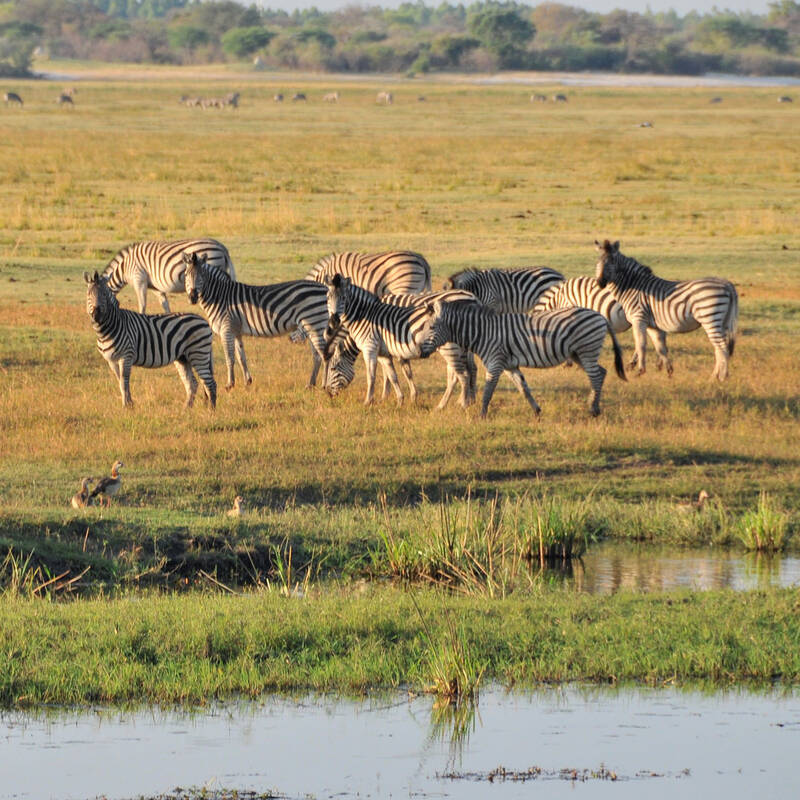
Chobe Day Trip
Full day - typically around 11 hours
For a top safari experience while visiting the Victoria Falls, don’t miss a day trip to Botswana’s Chobe National Park. Easily reachable from Livingstone, Zambia or Victoria Falls, Zimbabwe, Chobe boasts some of the best wildlife densities in southern Africa, with exceptional numbers of elephant drawn by the permanent waters of the Chobe River.
More about Chobe Day Trip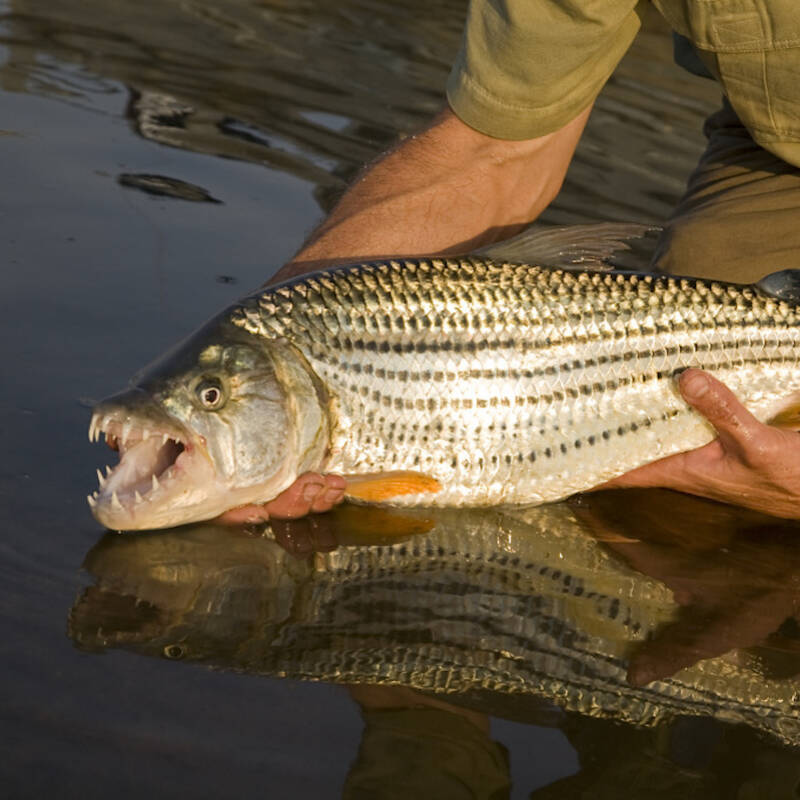
Fishing on the Zambezi River
Three hours or Seven hours
Many people head to Livingstone not just to see the Victoria Falls, but also to relax after an international flight or a busy safari, and a perfect way to do this is with a fishing trip on the calmer sections of the Zambezi River above the falls, drifting with the current, casting your line, and keeping an eye out for wildlife on the banks.
More about Fishing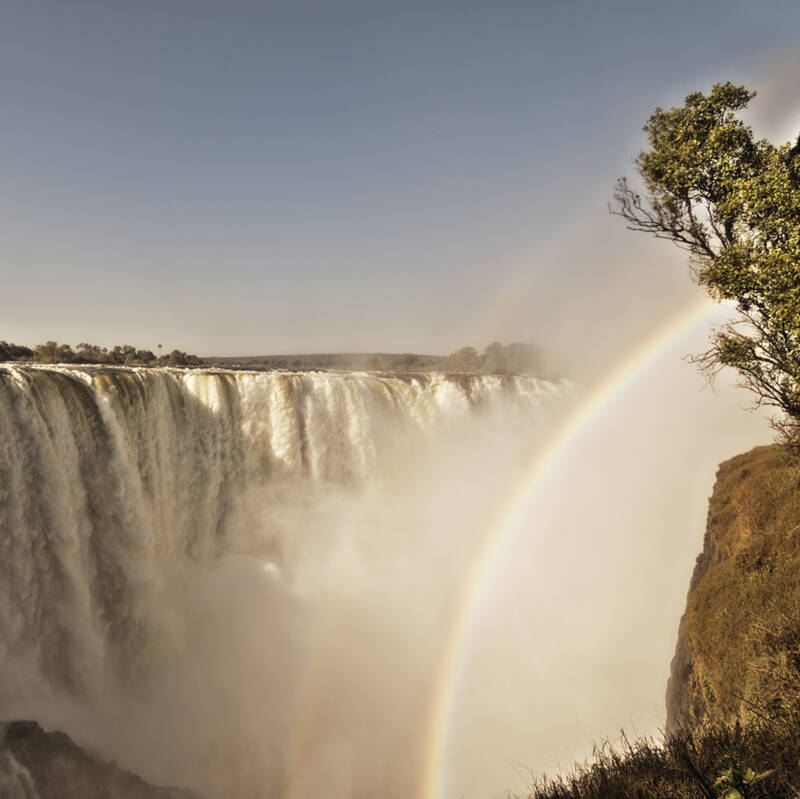
Guided tour of Victoria Falls
Two hours - AM & PM departures
One of the seven Natural Wonders of the World, the mighty Victoria Falls has to be seen to be believed. Why not take an expertly guided trip to learn about the history, geology, flora and fauna of one of Africa's most spectacular sites?
More about Tour of the Falls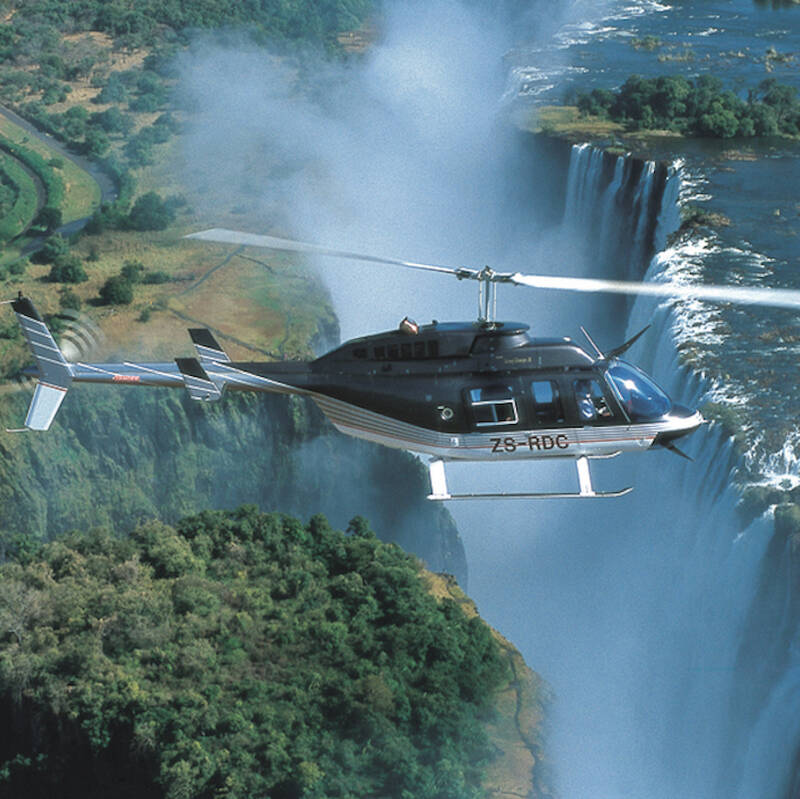
Helicopter Flight - Zambia
12 or 25 minute flights
Witnessing the power of the Victoria Falls from the ground is a stunning sight, but to see the world’s largest waterfall from the air is a very different experience! A helicopter flight over the Falls is truly incredible, and a worthy addition to your time in Livingstone.
More about Helicopter Flight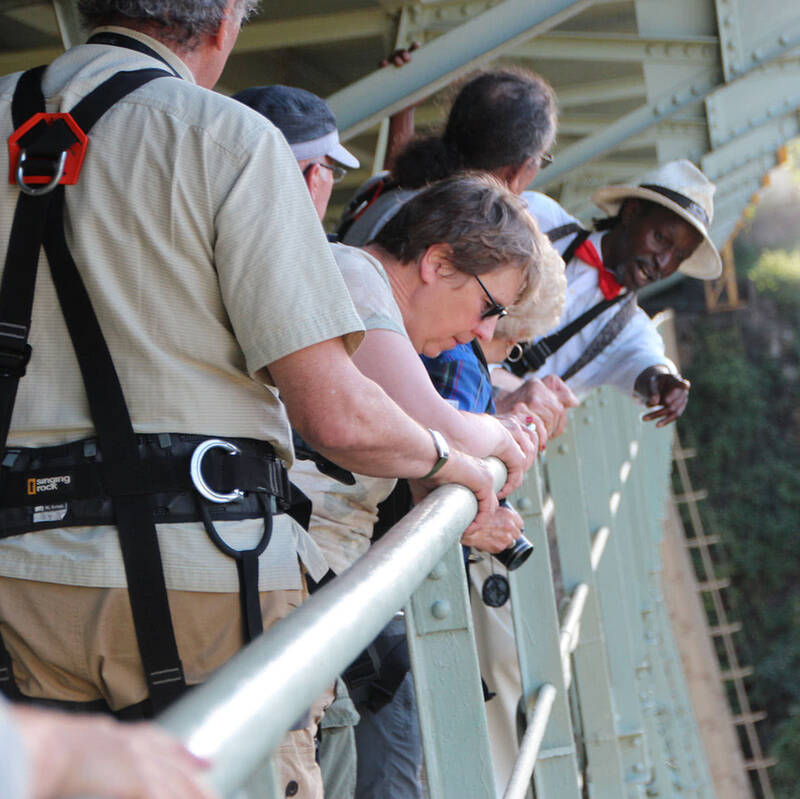
Historical Bridge Tour
Two hours - AM & PM departures
A feat of engineering the Victoria Falls Bridge was built in 1905 as part of Cecil Rhodes' vision to link the Cape to Cairo. With an expert guide and the appropriate safety equipment you'll not only discover the wonders of this Victorian marvel but also gain a unique perspective of the Victoria Falls themselves.
More about Bridge Tour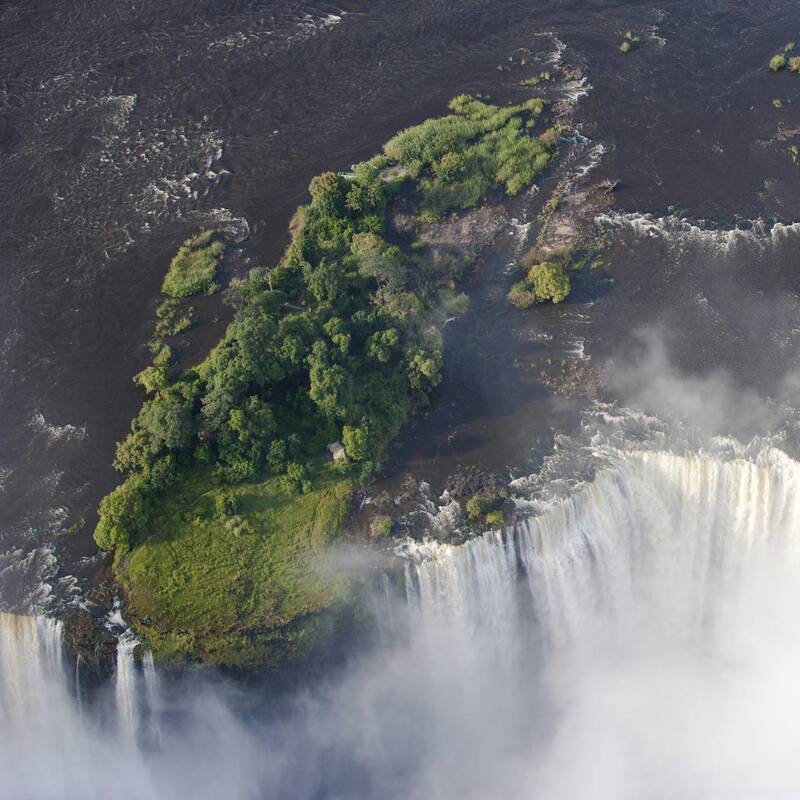
Livingstone Island & Devil's Pool
Three hours
Victoria Falls is one of the world's natural wonders, and a huge attraction for many visitors to southern Africa. We're often asked if the waterfall is best viewed from the Zambian or Zimbabwean side, but we think the best way to experience the full majesty of the falls is from the middle with a visit to Livingstone Island.
More about Livingstone Island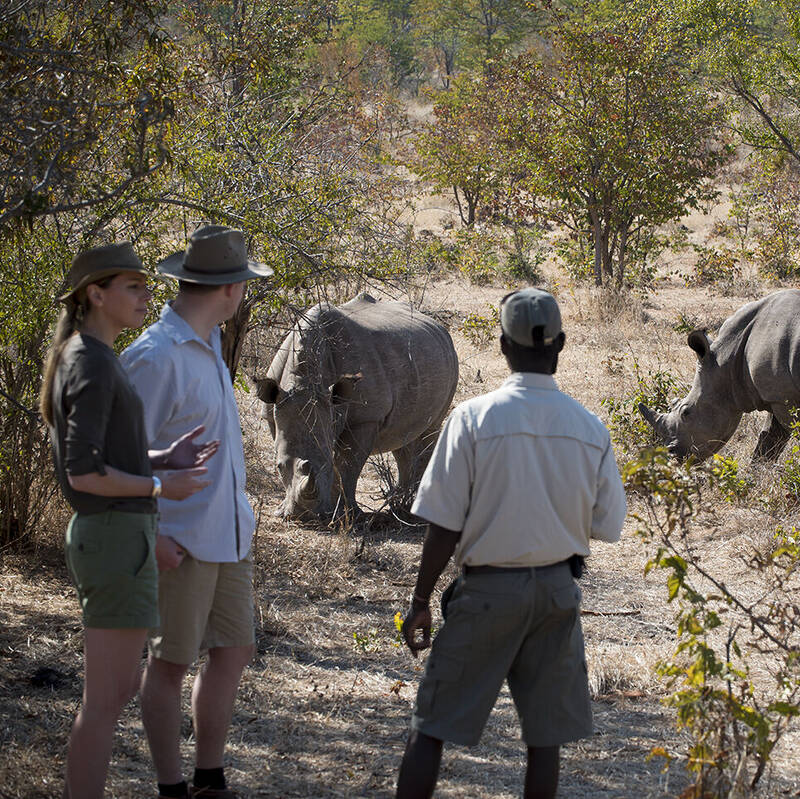
Rhino Walk
Around four hours - mornings only
Spend an unforgettable morning on a walking safari tracking Mosi-oa-Tunya’s small population of white rhino, with a strong chance of being able to approach these endangered creatures on foot.
More about Rhino Walk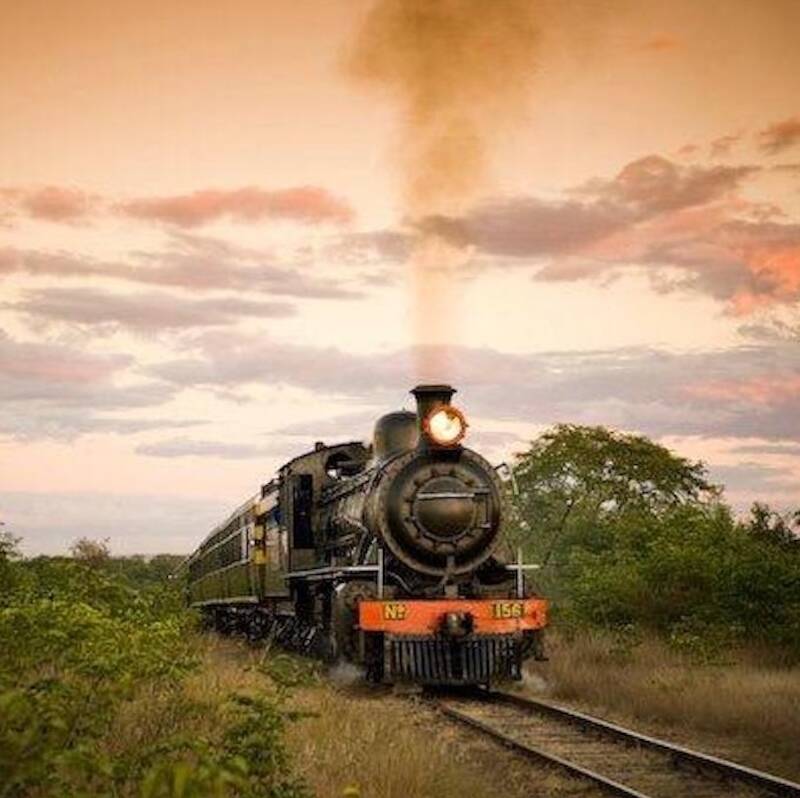
Royal Livingstone Express
Four hours approx.
The Royal Livingstone Express is a lovingly restored steam train. Guests steam along the original Rhodesian railway line onto the stunning Victoria Falls Bridge. From here guests can marvel at the falls and the Batoka Gorge before enjoying 5-courses of fine dining.
More about Royal Livingstone Express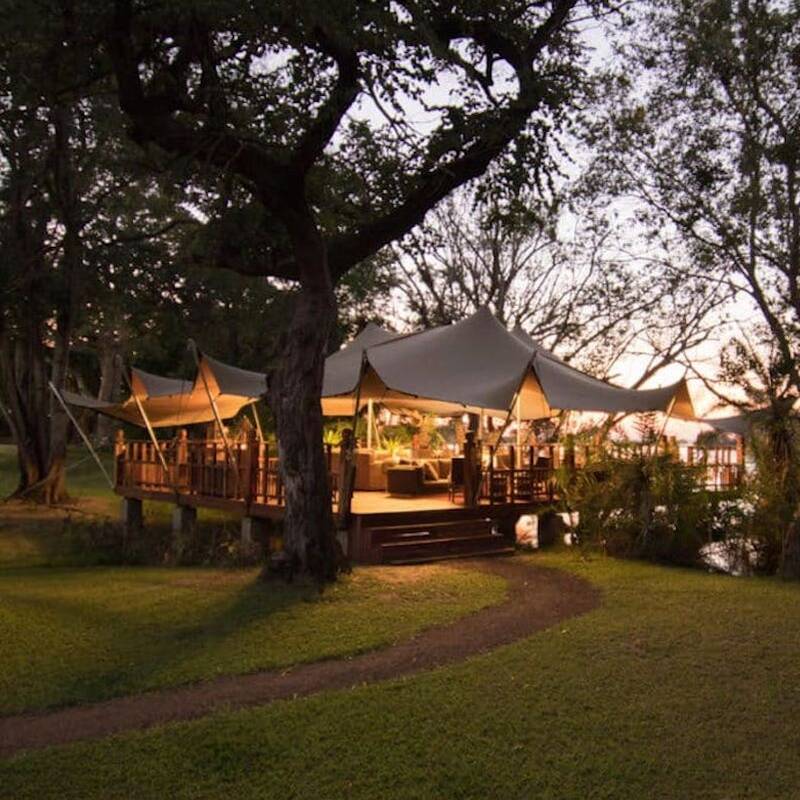
The Elephant Café
Approximately four hours
Visiting The Elephant Café is a great combination of a magical elephant encounter and fine dining. Spend time getting to know the elephants, some of them rescued from the wild many years ago, and others born into the herd. Then sit down and enjoy a delicious meal overlooking the Zambezi.
More about The Elephant CaféOther lodges in Livingstone & Victoria Falls
Alternative places to stay in this same area.
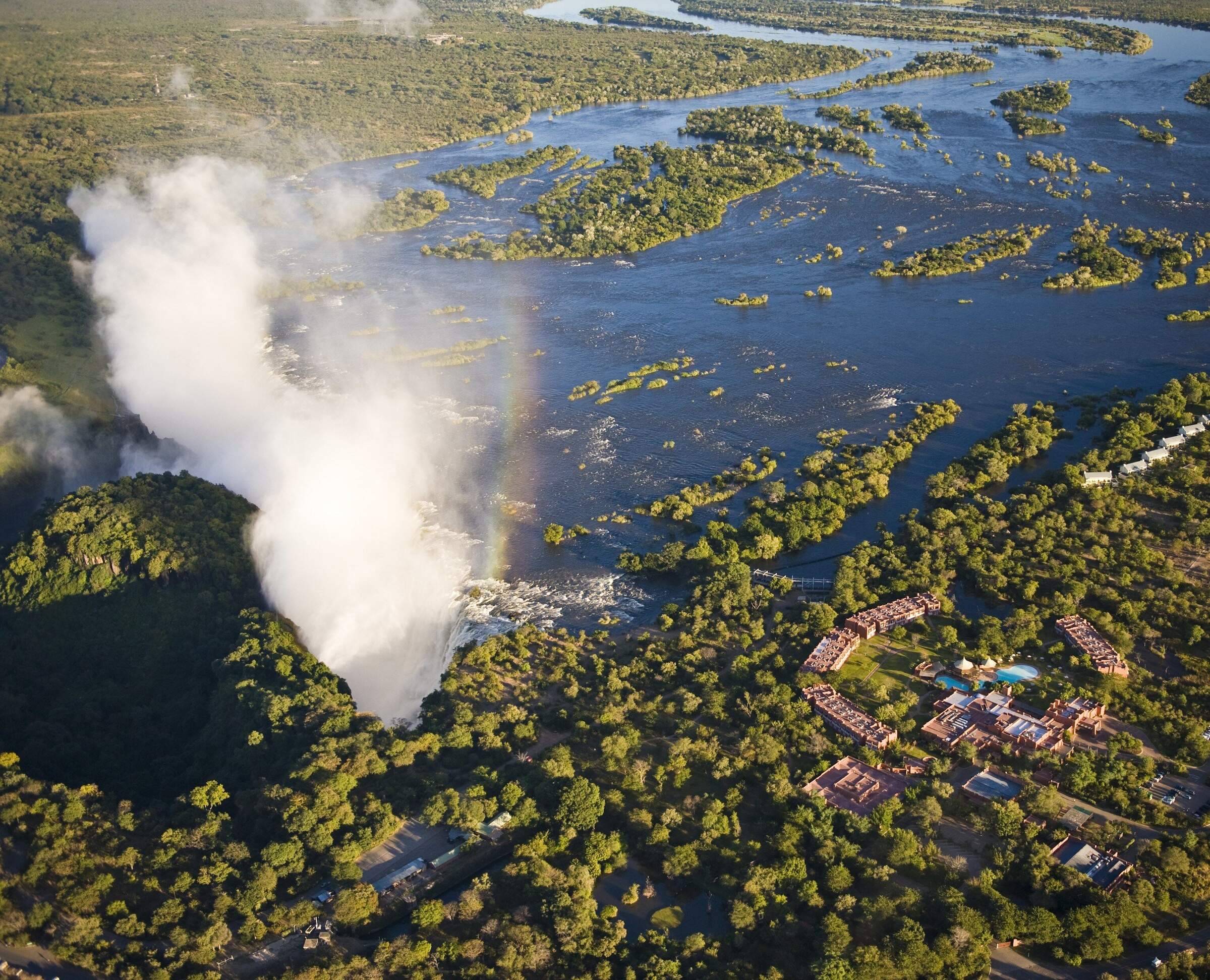
Avani Victoria Falls
Just a few minutes' walk from the Victoria Falls, with access for guests included, the Avani features good facilities in peaceful grounds at a modest price.
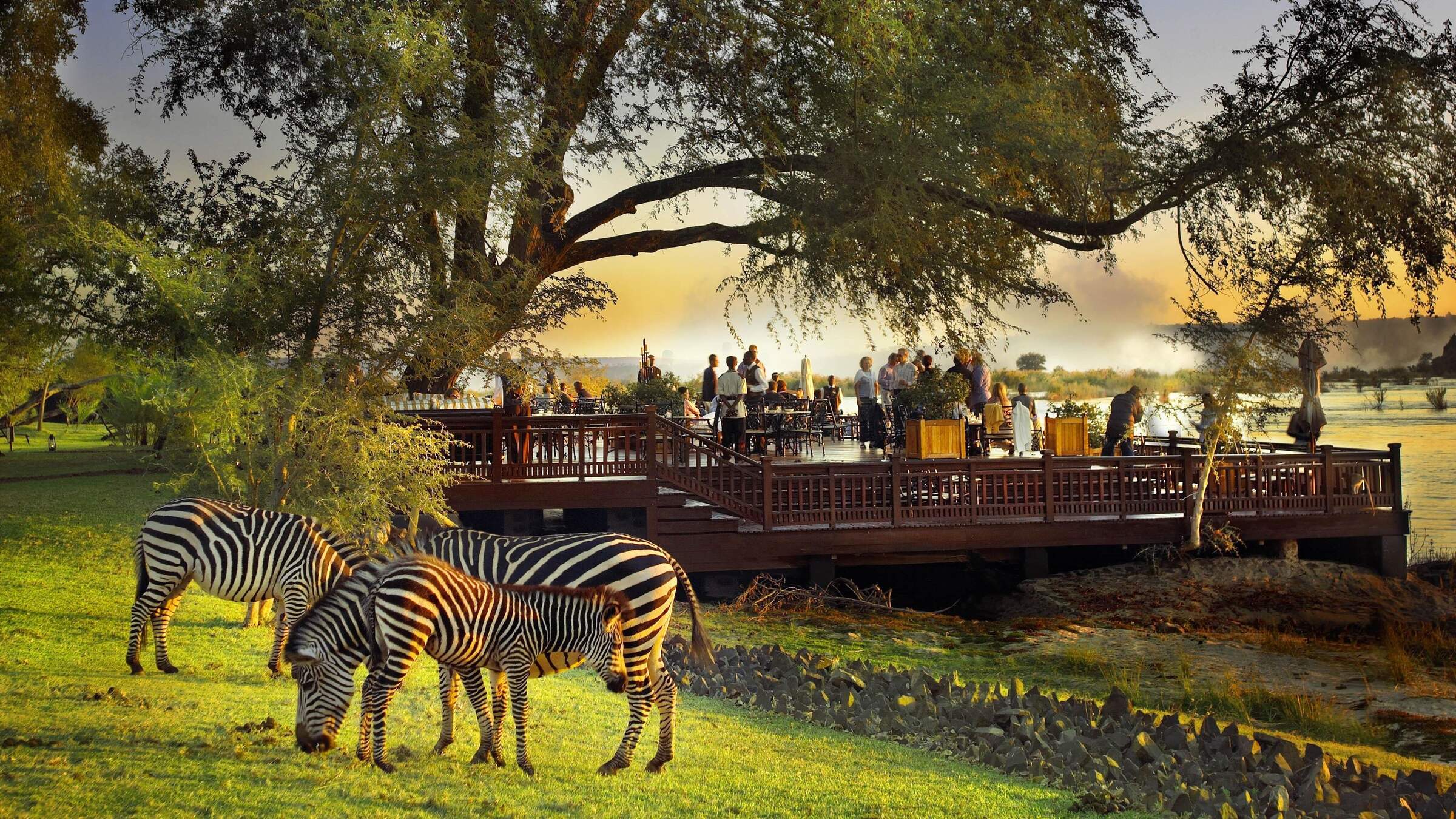
Royal Livingstone Hotel
Conveniently located just a short walk from the Zambia. side of the Victoria Falls, the colonial-style Royal Livingstone has beautiful grounds and small but quite luxurious rooms.
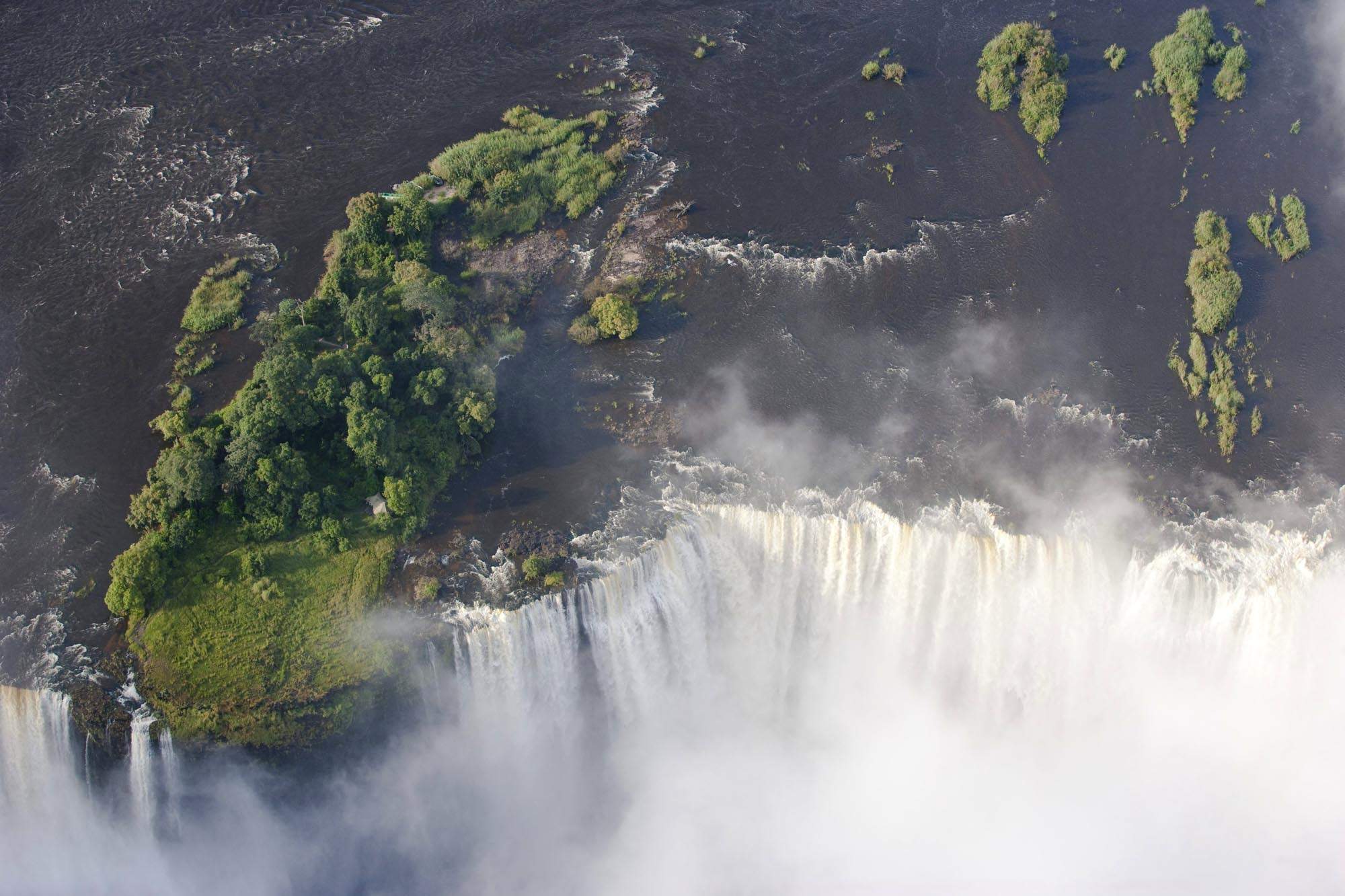
Tongabezi
Secluded on the banks of the Zambezi, less than 20km from the Victoria Falls, Tongabezi is one of the most exclusive lodges in Zambia.
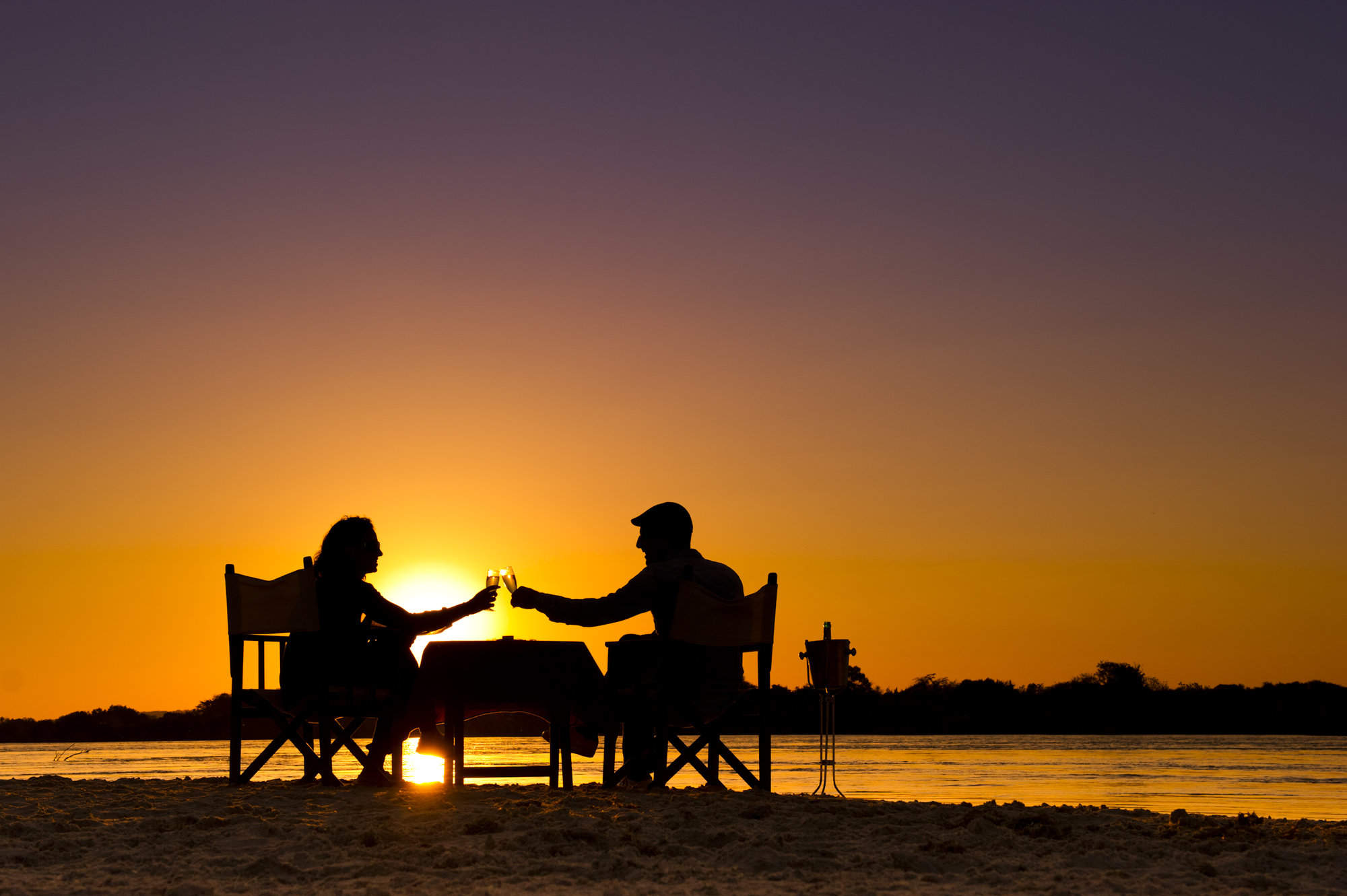
Islands of Siankaba
In a lovely location on the Zambezi upriver of the Victoria Falls, Islands of Siankaba provides a tranquil setting to relax at the start or end of a safari to Botswana or Zambia.
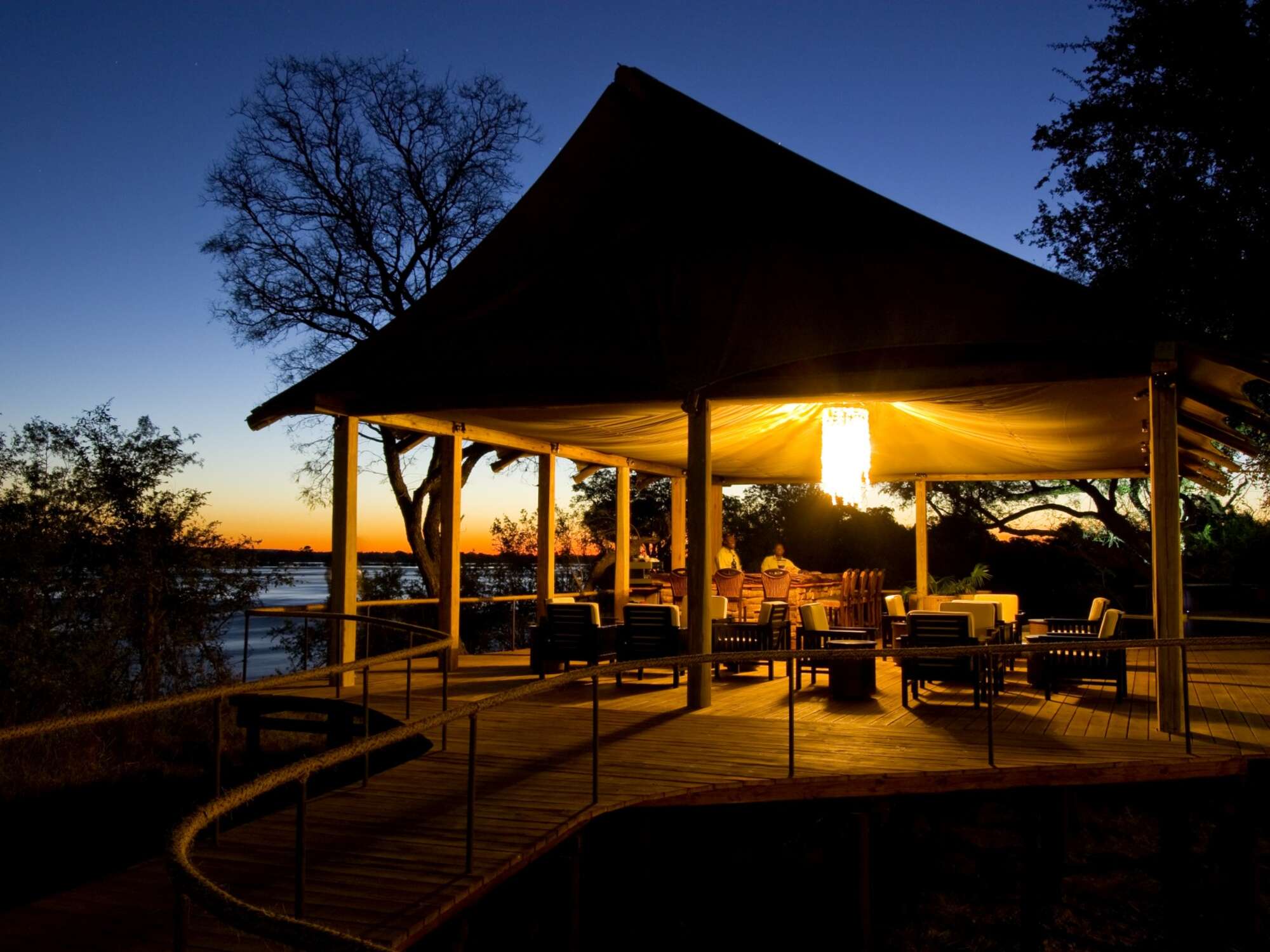
Toka Leya Camp
The new Toka Leya Camp stands beside the Zambezi inside Mosi-Oa-Tunya National Park – so wildlife often passes through. It's a comfortable tented camp which has great service and includes a range of activities.
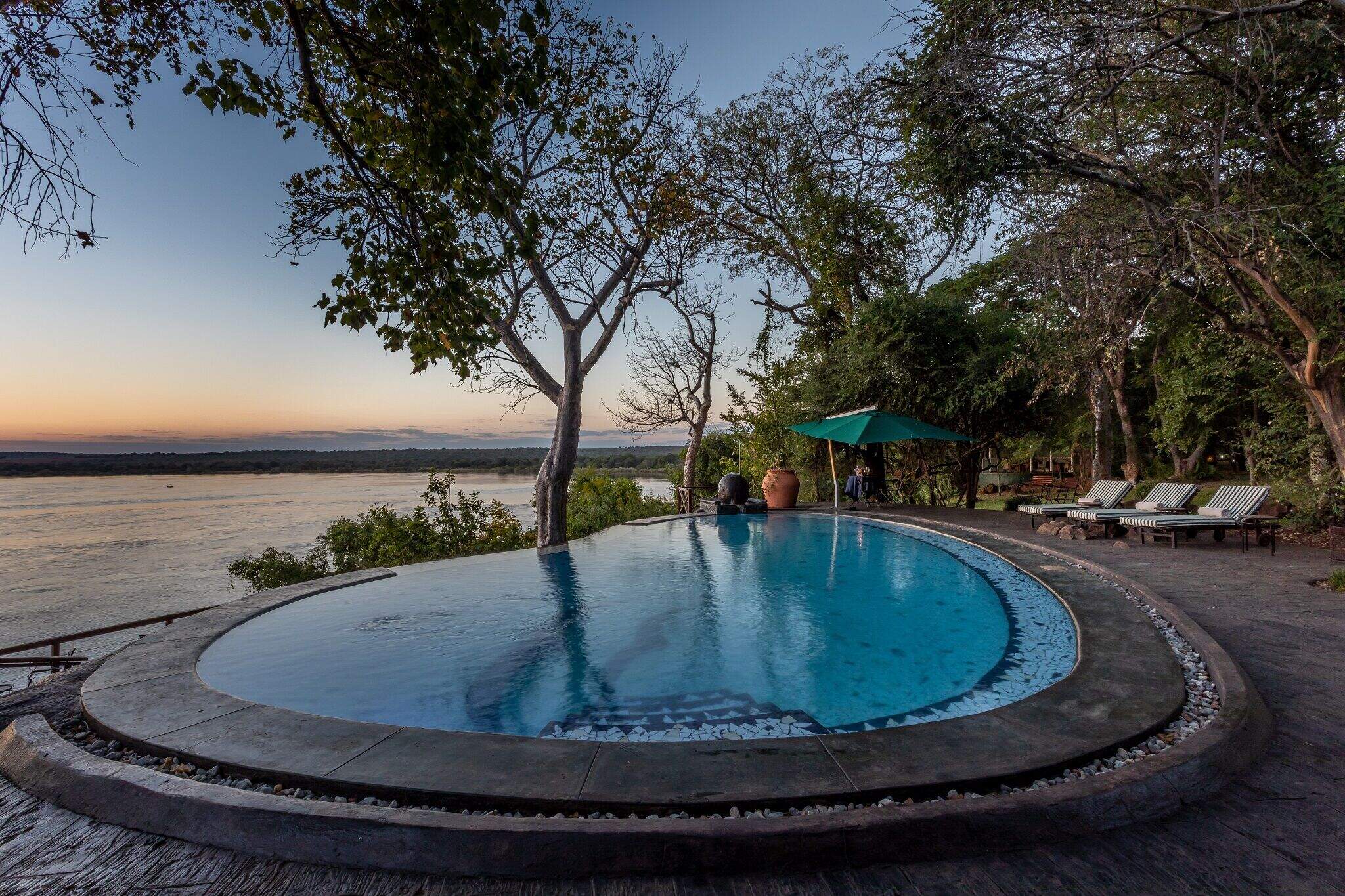
The River Club
The River Club, near Zambia's town of Livingstone and the Victoria Falls, overlooks the Zambezi River.
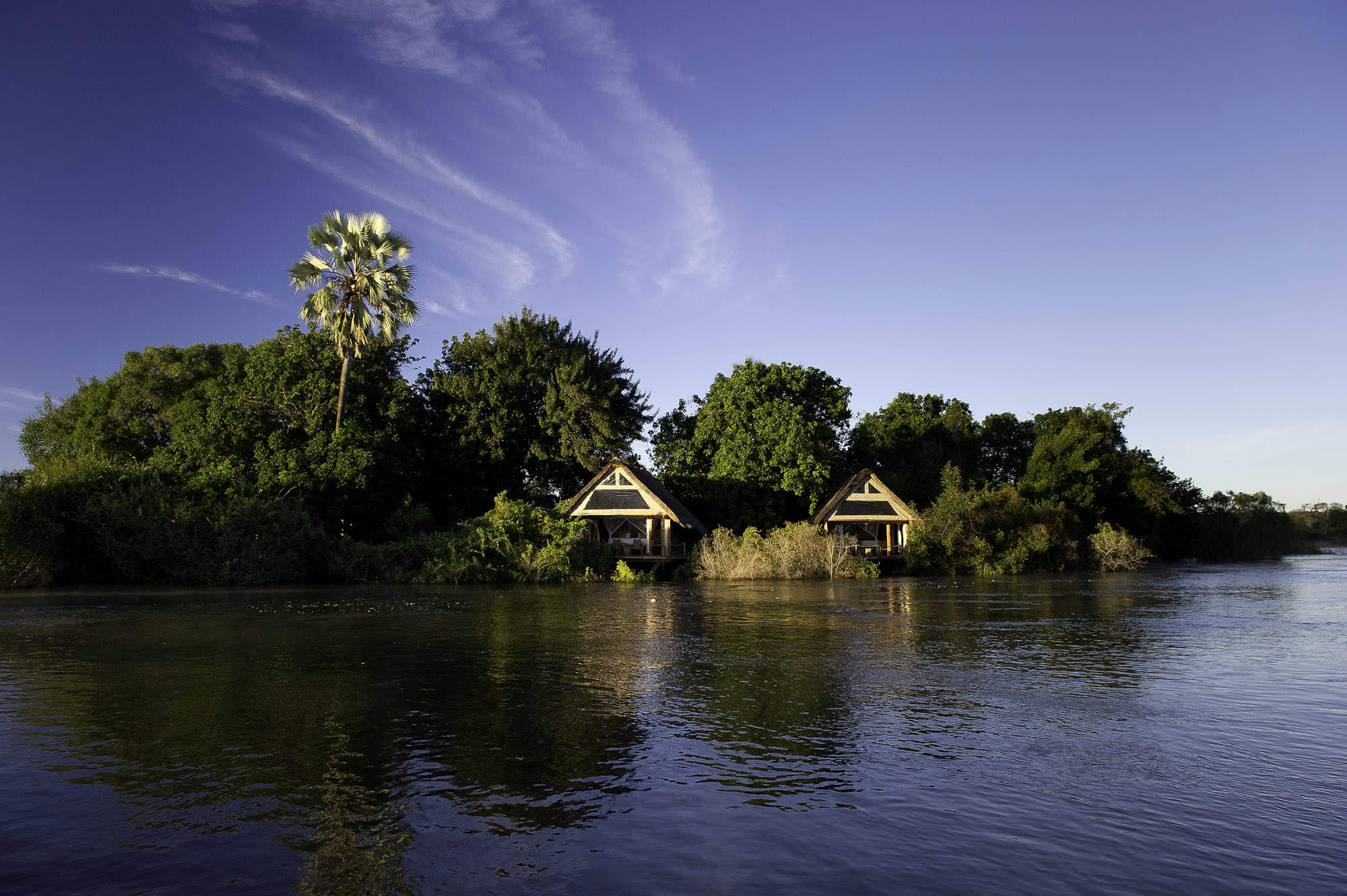
Sindabezi
Sindabezi, near Zambia's town of Livingstone and the Victoria Falls, is an island in the middle of the Zambezi River
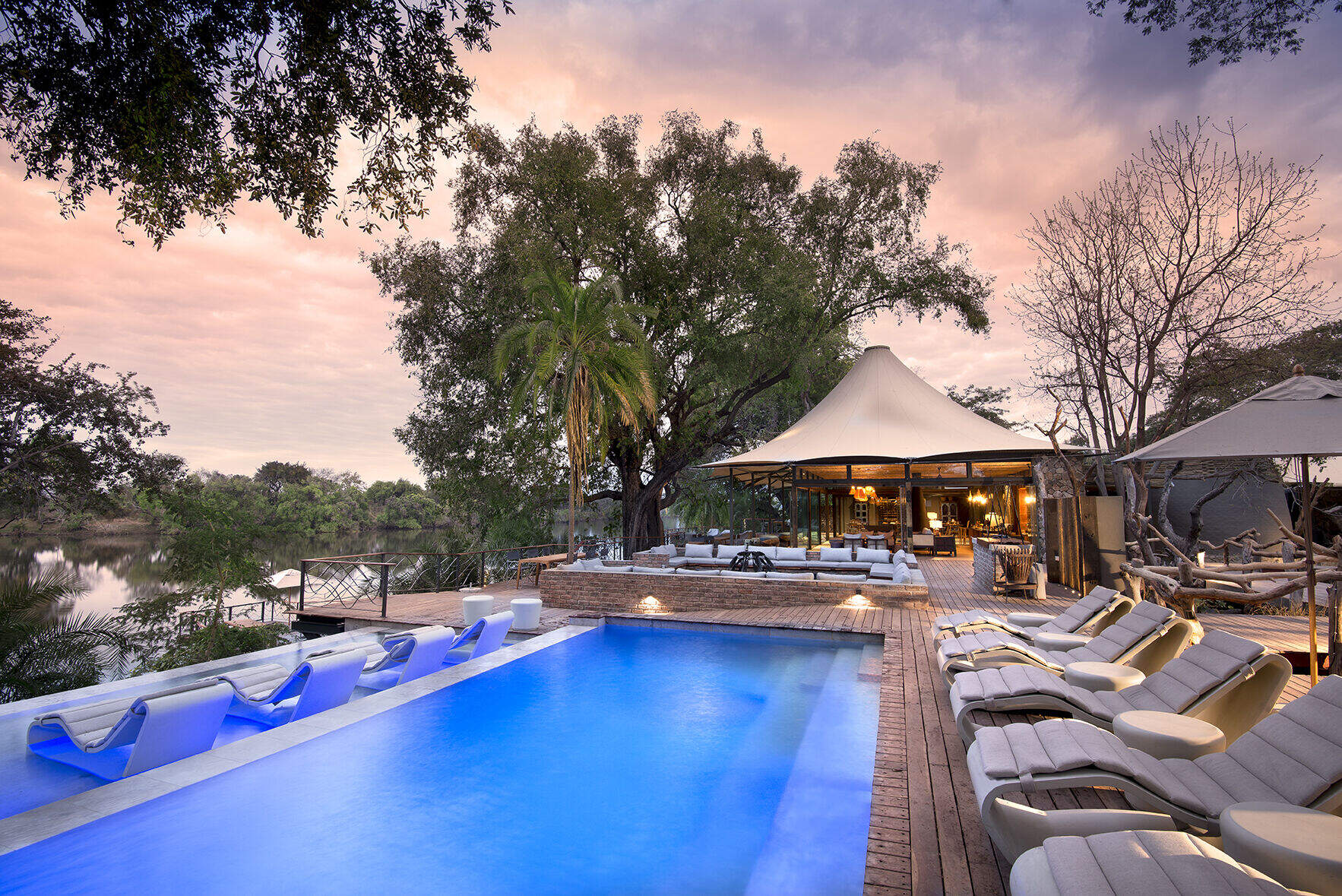
Thorntree River Lodge
Rebuilt in 2017, Thorntree River Lodge is one of the best riverside lodges in Livingstone, with a strong sense of the environment and straightforward access to the Falls.
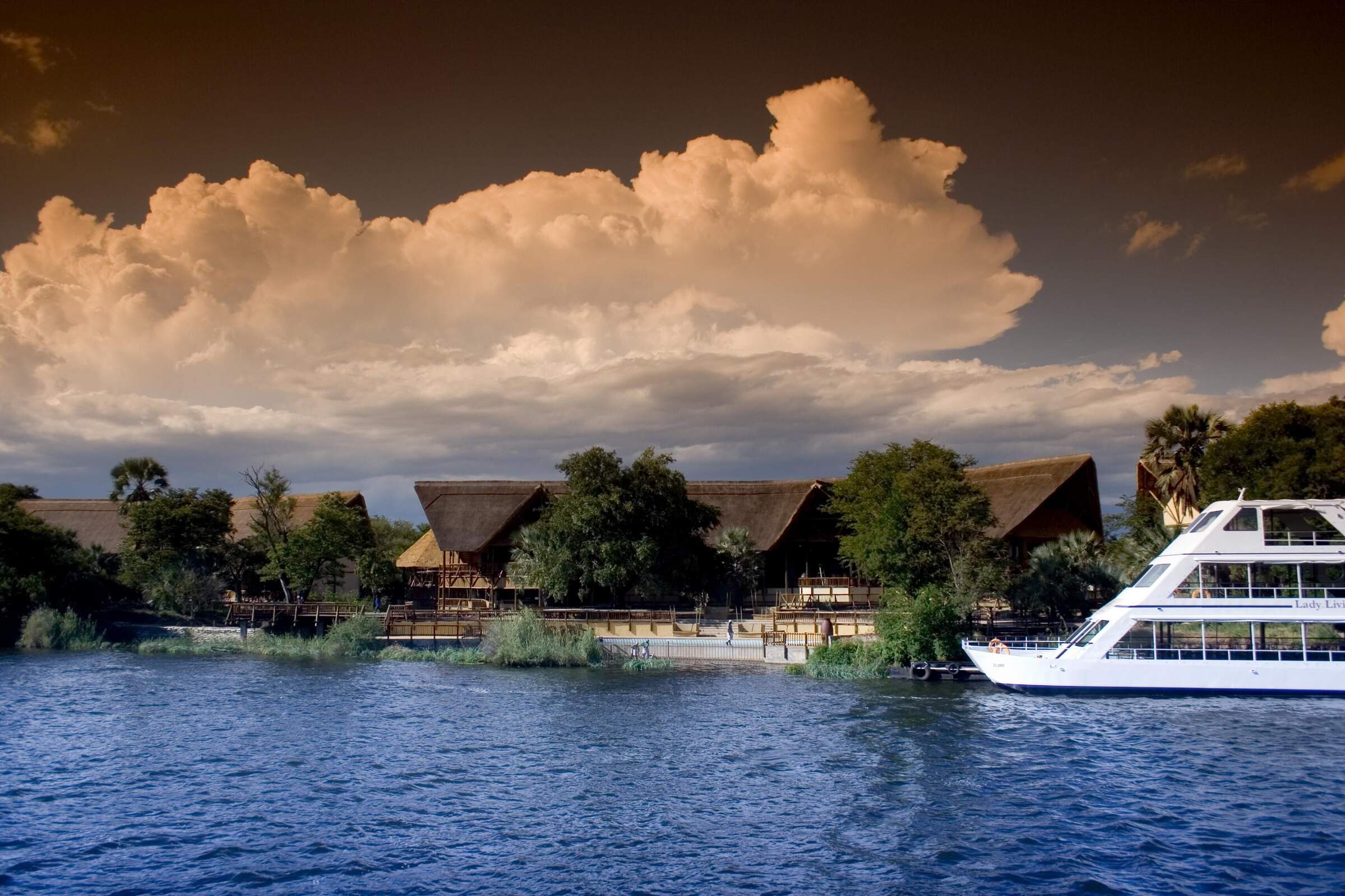
David Livingstone Lodge
The four-star David Livingstone Safari Lodge is in a lovely spot on the edge of the Zambezi River in Zambia, close to the Victoria Falls.
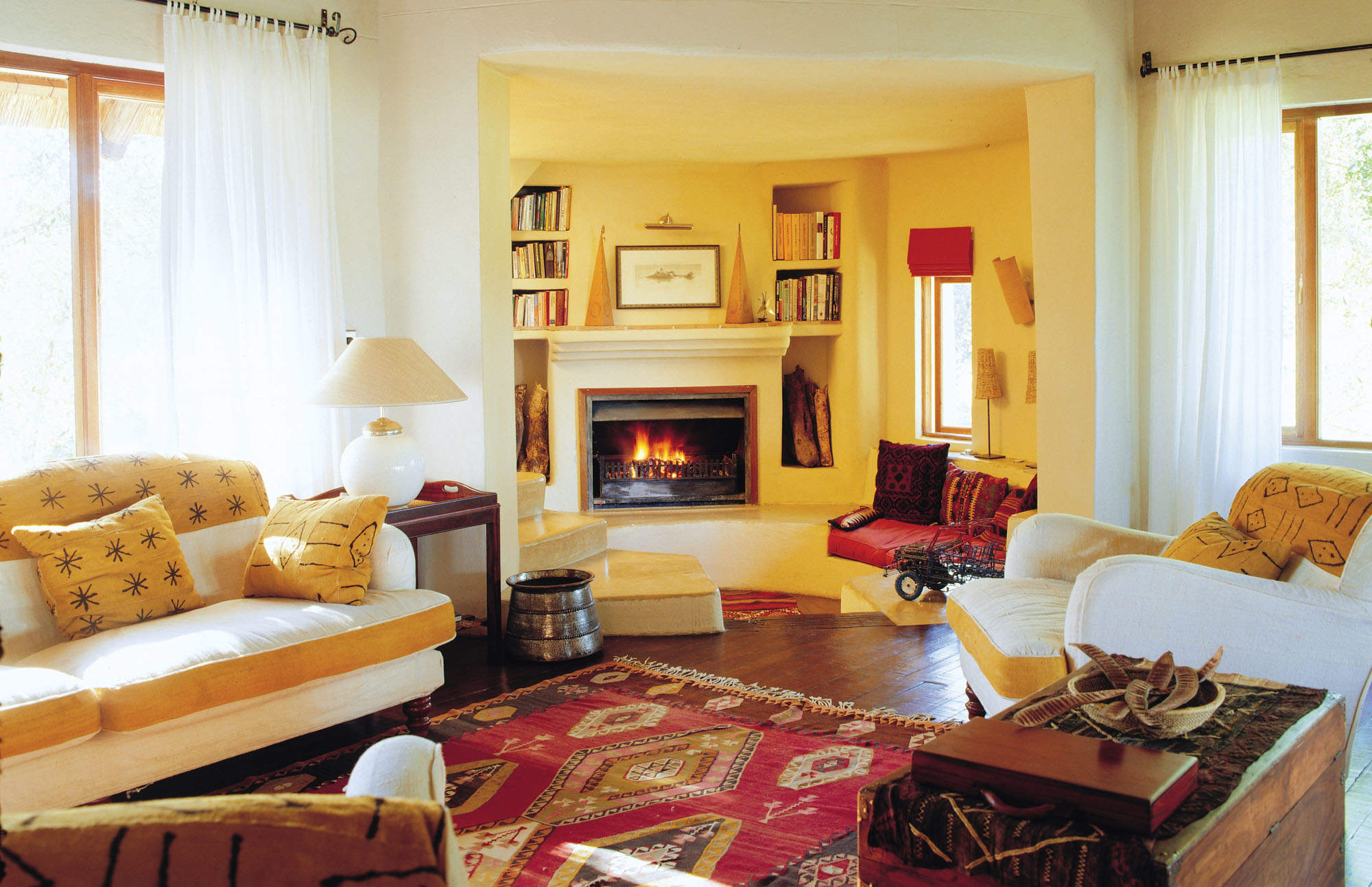
Tangala House
Tangala House, the family home near Zambia's town of Livingstone and the Victoria Falls
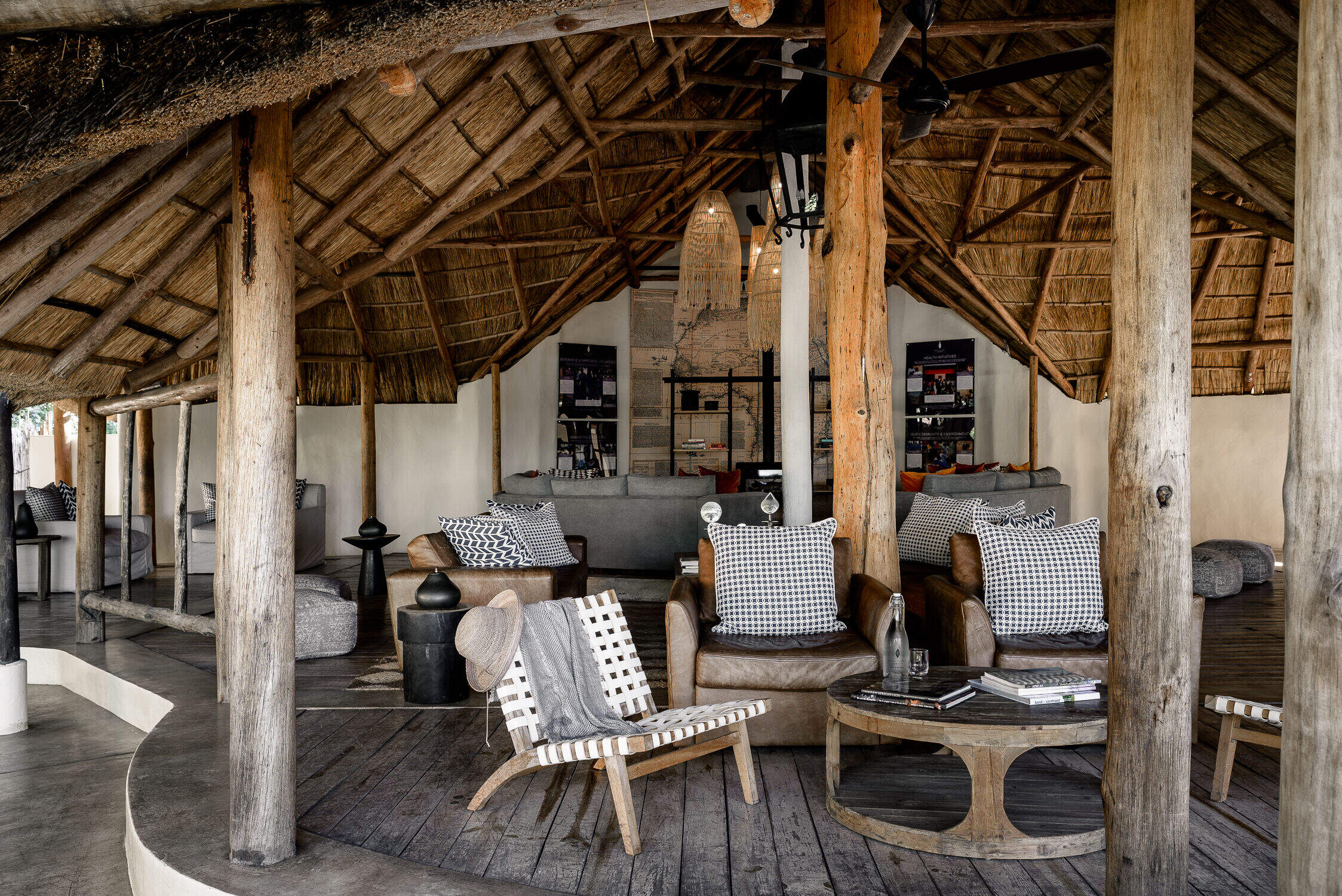
Sussi & Chuma
Sussi & Chuma combines a luxurious, laid-back camp with a good location on the Zambezi River, with quick access to the Victoria Falls.
When to go to Livingstone & Victoria Falls
Our month by month guide: What it's like to visit Waterberry Lodge in Livingstone & Victoria Falls
Jan
Feb
Mar
Apr
May
Jun
Jul
Aug
Sep
Oct
Nov
Dec
Livingstone & Victoria Falls in January
At the peak of Livingstone's green season, expect heavy rainfall for a few hours most days with sunny spells in between. Temperatures remain high, reaching over 30°C/86°F with high humidity.
The landscape around Victoria Falls is lush and green, offering spectacular views of the falls at their fullest. However, the abundance of water disperses wildlife in Mosi-oa-Tunya National Park, making game viewing challenging.
The high water levels in the Zambezi River limit some activities like whitewater rafting and visits to Devil's Pool. On the bright side, this is an excellent time for birdwatching in the park, with many migratory species present.
The Livingstone Museum provides a great indoor activity option during rainy periods.
- Hot and humid with frequent rainfall
- Victoria Falls at high water level, misty views
- Lush green landscape, great for photography
- Wildlife dispersed, game viewing challenging
- Low tourist numbers, cheaper accommodation
Our view
This is not a great time to visit
Weather in January
Livingstone & Victoria Falls in February
February remains in the heart of the green season in Livingstone. Dramatic thunderstorms deliver a few hours of rain most days, interspersed with clear sunny skies.
Victoria Falls is at its most powerful, creating an impressive spectacle of mist and rainbows. The high water levels in the Zambezi River allow for thrilling boat trips, offering unique perspectives of the falls and surrounding landscapes.
While game viewing in Mosi-oa-Tunya National Park is limited due to thick vegetation, you might spot animals with newborns. The Livingstone Museum and local markets provide cultural experiences during rainy periods. This is also an excellent time to enjoy spa treatments and relaxation at riverside retreats, taking in the lush, green scenery.
- Peak of green season, hot and humid days
- Victoria Falls impressive but views obscured
- Birdwatching excellent with migratory species
- Most adventure activities unavailable
- Quiet tourist season, best hotel deals
Our view
This is not a great time to visit
Weather in February
Livingstone & Victoria Falls in March
March is the last month of Livingstone's green season, with heavy downpours still occurring most days. Water levels at Victoria Falls and the Zambezi River are at their highest, creating a magnificent, thunderous display. While this limits some activities like whitewater rafting and visits to Devil's Pool, it's an excellent time for scenic flights over the falls.
In Mosi-oa-Tunya National Park, wildlife viewing remains challenging due to thick vegetation, but patient observers might be rewarded with sightings of predators taking advantage of vulnerable young animals. The Livingstone Museum offers insights into local history and culture on rainy days.
As the season transitions, some adventure activities begin to resume, and the lush landscape provides stunning backdrops for photography.
- Rains begin to subside, still hot and humid
- Victoria Falls at its most powerful
- Landscape lush and green, photogenic
- Wildlife with young, but viewing difficult
- Fewer tourists, great for budget travellers
Our view
This is not a great time to visit
Weather in March
Livingstone & Victoria Falls in April
As Livingstone transitions from intense downpours to lighter, sporadic showers, April marks a shift in tourist activities. Victoria Falls remains impressive, though water levels start to decrease slightly. This is the first month when it's possible to visit Livingstone Island, offering unique views of the falls.
In Mosi-oa-Tunya National Park, as the landscape begins to dry, wildlife viewing gradually improves. Adventure activities like whitewater rafting on the Zambezi River start to become available again.
The Livingstone Museum and local craft markets provide cultural experiences, while the town's restaurants and bars offer a taste of local cuisine and nightlife. This is also an excellent time for relaxing spa treatments and golf, with pleasant temperatures and decreasing humidity.
- Transition month, rains becoming less frequent
- Victoria Falls spectacular but misty
- Adventure activities slowly resuming
- Wildlife viewing improving as bush thins
- Moderate tourist numbers, good value stays
Our view
This is not a great time to visit
Weather in April
Livingstone & Victoria Falls in May
May typically marks the start of Livingstone's dry season. While there's a chance of an odd shower, most days are clear and sunny. As winter approaches, temperatures start to drop, with highs around 26°C/79°F.
Victoria Falls remains impressive, but water levels decrease, improving visibility. This is an excellent time for activities like whitewater rafting on the Zambezi River and visiting Devil's Pool.
In Mosi-oa-Tunya National Park, game viewing improves as vegetation thins out. Walking safaris become more feasible, offering close encounters with wildlife. Cultural experiences at Livingstone and Mukuni villages are enjoyable in the mild weather. Adventure activities like bungee jumping and gorge swinging at Victoria Falls are in full swing.
- Start of dry season, clearer and cooler
- Victoria Falls views improving
- White water rafting season begins
- Game viewing getting better in national park
- Tourist numbers increasing, book in advance
Our view
A good time to visit, with pros & cons
Weather in May
Livingstone & Victoria Falls in June
Livingstone sees virtually no rainfall in June, with a strong chance of sunny days throughout. The humidity drops dramatically, and temperatures fall to around 10°C/50°F at night but still warm to 25°C/77°F during the day.
Victoria Falls offers clearer views as mist decreases, making it ideal for photography. This is a prime time for activities like whitewater rafting, bungee jumping, and visiting Devil's Pool. In Mosi-oa-Tunya National Park, the thinning vegetation significantly improves game viewing and walking safaris.
Sunset cruises on the Zambezi River are particularly beautiful this time of year. Early morning and late evening activities may require warm clothing.
- Cool dry days, chilly nights
- Victoria Falls views excellent
- Prime time for white water rafting
- Wildlife viewing good in Mosi-oa-Tunya park
- High season begins, busier and pricier
Our view
A very good time to visit
Weather in June
Livingstone & Victoria Falls in July
As the dry season continues in Livingstone, vegetation dies back and water becomes scarcer. This results in excellent game viewing in Mosi-oa-Tunya National Park, with wildlife clustering around remaining water sources.
July is the first month of winter, and while daytime temperatures are in the 20s Celsius / 70s Fahrenheit, nights can be cold. Victoria Falls offers clear views with reduced mist, ideal for photography and activities like the 'Flight of Angels' helicopter rides. This is peak season for whitewater rafting, bungee jumping, and gorge swinging.
Cultural tours to Livingstone and Mukuni villages provide warm daytime activities. Sunset cruises on the Zambezi River offer spectacular views and wildlife sightings. Remember to pack warm clothes for early morning and evening activities.
- Cool and dry, perfect weather
- Victoria Falls views at their best
- Ideal for all outdoor and water activities
- Excellent game viewing opportunities
- Peak tourist season, book well in advance
Our view
A very good time to visit
Weather in July
Livingstone & Victoria Falls in August
By August, Livingstone's landscape is dry, and wildlife in Mosi-oa-Tunya National Park congregates around remaining water sources, providing excellent game viewing opportunities. With virtually no chance of rain, sunny days are almost guaranteed.
The flow over Victoria Falls is reducing, so views are clear, not misty; there are often perfect conditions for activities like whitewater rafting and visits to Devil's Pool. This is an ideal time for walking safaris in the national park. Cultural experiences at local villages are enjoyable in the mild daytime temperatures. Adventure activities like bungee jumping and gorge swinging at the falls are popular.
Sunset cruises on the Zambezi River offer stunning views and wildlife sightings. Early morning and evening activities can be chilly, so warm clothing is recommended.
- Warm days, cool nights, very dry
- Low water levels, great for Devil's Pool
- White water rafting at its most thrilling
- Wildlife concentrated near water sources
- Very busy, highest prices for accommodation
Our view
Fantastic: the very best time to visit
Weather in August
Livingstone & Victoria Falls in September
September is one of the most popular times to visit Livingstone. Rain is almost unheard of, humidity is low, and temperatures are starting to climb. The flow over Victoria Falls can be greatly reduced and so offers clear views with minimal mist, perfect for photography and activities like the 'Flight of Angels' helicopter rides.
This is prime time for whitewater rafting on the Zambezi River and visiting Devil's Pool. In Mosi-oa-Tunya National Park, game viewing is at its best as wildlife clusters around scarce water sources. Walking safaris offer excellent opportunities to see animals up close.
Adventure activities like bungee jumping and gorge swinging are in full swing. Sunset cruises on the Zambezi are particularly beautiful this time of year.
- Hot days, warm nights, very dry
- Low water at the Falls, best for rock swimming
- Excellent for all adventure activities
- Peak time for wildlife viewing
- Still high season, busy and expensive
Our view
Fantastic: the very best time to visit
Weather in September
Livingstone & Victoria Falls in October
As the dry season peaks in Livingstone, the landscape is brown and barren. Victoria Falls is at its lowest flow, revealing the full extent of the rocky gorge. This is the best time for whitewater rafting on the Zambezi River and swimming in Devil's Pool.
In Mosi-oa-Tunya National Park, game viewing reaches its peak as animals concentrate around remaining water sources. However, temperatures can be uncomfortably hot, reaching over 40°C/104°F in the daytime. This makes walking safaris challenging, especially without shade.
Cultural experiences at local villages are best enjoyed in the cooler mornings or evenings. Adventure activities like bungee jumping and gorge swinging continue, but the heat can be intense. Sunset cruises on the Zambezi offer a cooler alternative and excellent wildlife viewing.
- Very hot days and nights
- Lowest water levels at Victoria Falls
- Best month for white water rafting
- Wildlife viewing excellent as water scarce
- Tourist numbers start to decrease
Our view
A very good time to visit
Weather in October
Livingstone & Victoria Falls in November
November typically marks the end of the dry season in Livingstone. While the timing of the first rains is uncertain, temperatures remain high and humidity builds.
Victoria Falls is at its lowest flow, offering unique views of the rocky gorge. This is the last chance for activities like swimming in Devil's Pool before water levels rise. In Mosi-oa-Tunya National Park, wildlife viewing can still be excellent early in the month, but animals start to disperse as soon as the rains arrive.
Adventure activities like bungee jumping and gorge swinging continue, weather permitting. As the month progresses, the landscape begins to transform with the first rains, bringing a burst of green growth.
- Hot and humid, occasional rain showers
- Water levels at Victoria Falls increasing
- Some adventure activities become limited
- Wildlife starts to disperse with early rains
- Shoulder season, fewer tourists
Our view
A good time to visit, with pros & cons
Weather in November
Livingstone & Victoria Falls in December
December marks the start of Livingstone's green season, with heavy thunderstorms most days interspersed by sunny spells. Victoria Falls begins to slowly increase in volume, offering a mix of clear views and building mist.
Water-based activities on the Zambezi River, like whitewater rafting, may be suspended as water levels rise.
In Mosi-oa-Tunya National Park, the arrival of rain disperses wildlife, making game viewing more challenging. However, this is an excellent time for birdwatching as migratory species arrive.
The Livingstone Museum provides a great indoor activity option during rainy periods. Cultural experiences at local villages offer insights into seasonal traditions. Despite the rain, adventure activities like bungee jumping and gorge swinging continue when weather permits. The landscape transforms into a lush, green paradise.
- Green season begins, hot and humid
- Victoria Falls gaining water volume
- Many adventure activities unavailable
- Wildlife dispersed, viewing more challenging
- Low season, quiet with cheaper rates
Our view
This is not a great time to visit
Weather in December

Looking for inspiration on where to travel next?
Visit our trip chooser to explore your options and find inspiration for your perfect African adventure
Inspire me